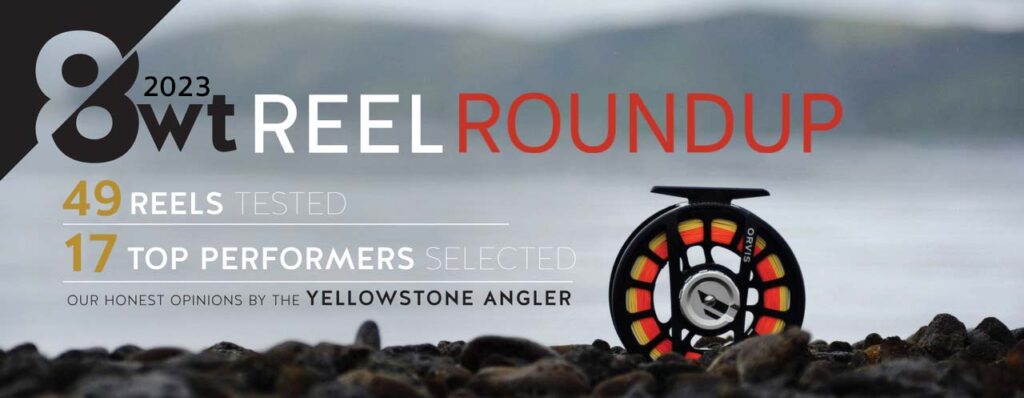
A lot has happened since our last 8-Weight Reel Shootout, including a worldwide pandemic and a 500-year flood on the Yellowstone! While we are still enduring the tribulations of high demand/low supply with certain fly-fishing products, we thought fly anglers would be interested to read about 2023’s current 8-weight reel offerings. We also wanted to include some of our all-time favorite reels, like the Tibor Everglades, which we have fished and loved for nearly 30 years.
We are not ranking or scoring in this Roundup. This idea has emerged from comments we have read in forums critiquing our earlier reel Shootouts, as well as from our customers and other fly-fishers who weighed in on-line and in person. Because we believe there are so many good reels at each price level, each angler will have his or her own preferences among these.
We realized that rather than ranking or scoring these reels, our readership would best be served by reading our own impressions and preferences, which coupled with the objective measurements we have made, will provide the necessary information to select the 8-weight reel that best suits a particular angler’s preferences, needs, and budget.
Just because we chose not to score each reel doesn’t mean that all reels are created equal. We all liked certain reels better than others, and under our “Meet the Testers” section you can see each tester’s 5 favorite reels.
A prospective reel purchaser must necessarily consider a reel’s construction; its functionality and its aesthetics. Those attributes are, in varying degrees, defined by both objective and subjective values, as well as by hybrid ones.
Is the reel heavy or light? Is the reel machined or die-cast? How well is it anodized? Will it resist the rigors of angler abuse or negligence? What is its maximum drag and how wide is its adjustment range? Is the drag cork, or disc, or is it a hybrid? Is it sealed? Does it require maintenance or cleaning? Is it a large or medium arbor spool? Does it “creep” while casting? Are the spool handle and drag knob easy to grip? Oversized or small? Are the frame and spool tolerance tight? Is there an incoming or going outgoing sound, loud or soft? Does the reel foot loosen over time? Can minor repairs of the reel be made by the angler? Does the angler prefer a reel with bright colors or elaborate artwork? Or is a subdued classic look preferred? Is the price a deterrent?
When it comes to fly reels one size, most certainly, will not fit all. We hope, however, the metrics published here, coupled with our personal impressions and preferences and our customers’ experience using and getting these reels serviced will help you pick the right 8-weight reel for your needs when buying an 8-weight.
At the end of the day when selecting an 8-weight fly reel, the only opinion that matters is yours.
Click here for more photos and videos of our real world testing
An 8-weight reel is the Swiss Army knife of reels. The best 8-weight reels will be able to cover both fresh and saltwater angling, comfortably holding a 6, 7, 8, or 9-weight line with plenty of backing. It should have a range of drag that can handle lighter tippet for spooky trout as well as enough stopping power to put the clamp down on a hard running Jack Crevalle. The best 8-weight reels have sufficient drag power with the capability to shed heat, so the drag won’t seize up on blazing fast bonefish runs. For the biggest bonefish, you must have the capability to set the drag at a desired setting and override it with your palm when needed. Permit are much the same, just bigger and seemingly faster, often requiring 200 yards of backing. The best 8-weight reels are reliable, and are built to last – not only for your lifetime – but for the loved one that you choose to pass your reel on to.
These are the types of reels we were looking for in our Reel Roundup, and are the type of reels we feel confident recommending. Inexpensive reels certainly have their place, however longevity and reliability are not their forte. We feel you are better off saving up your money and buying one of the best reels rather than buying a reel than might someday end up in a landfill. As the industry saying goes – buy nice, or buy twice.
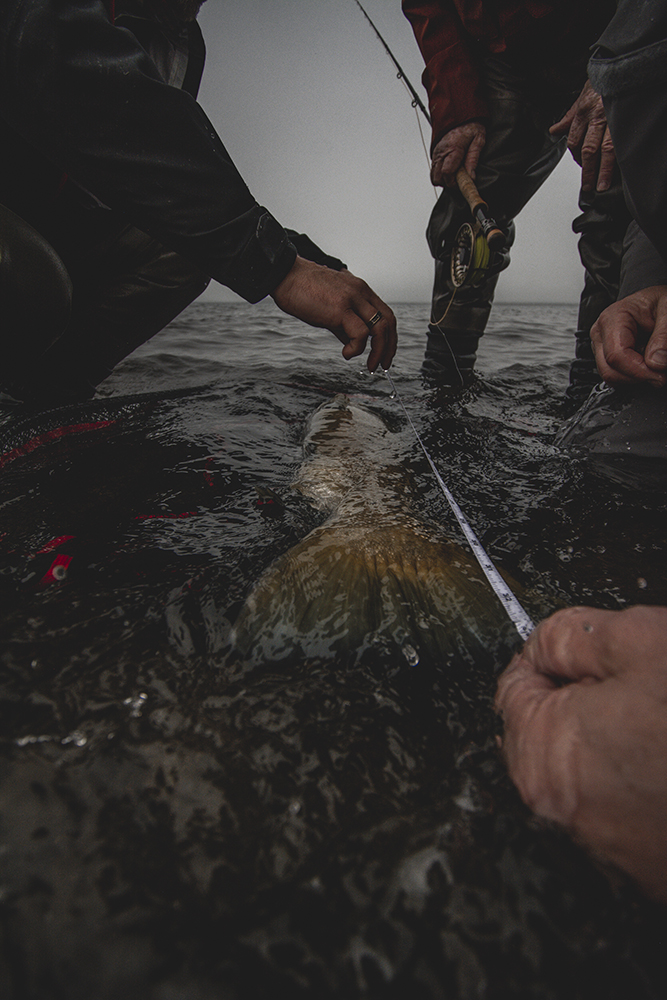

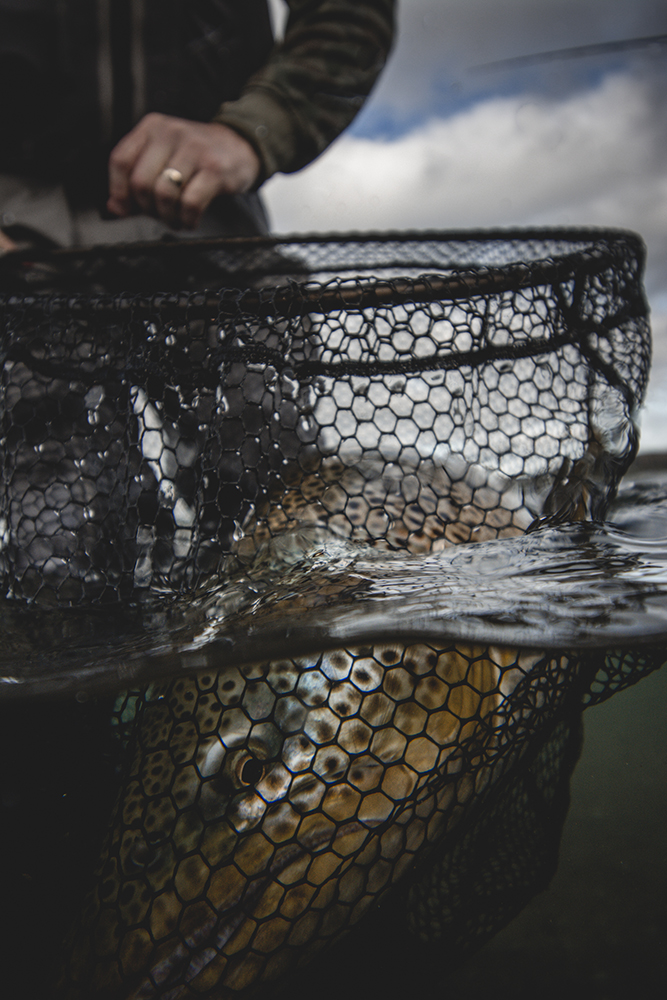
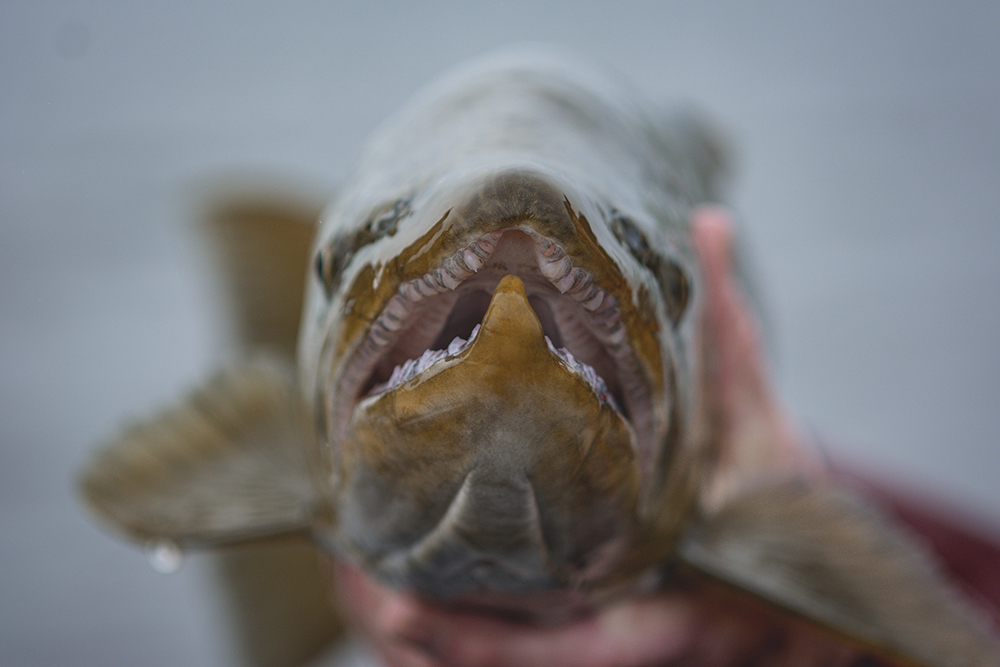
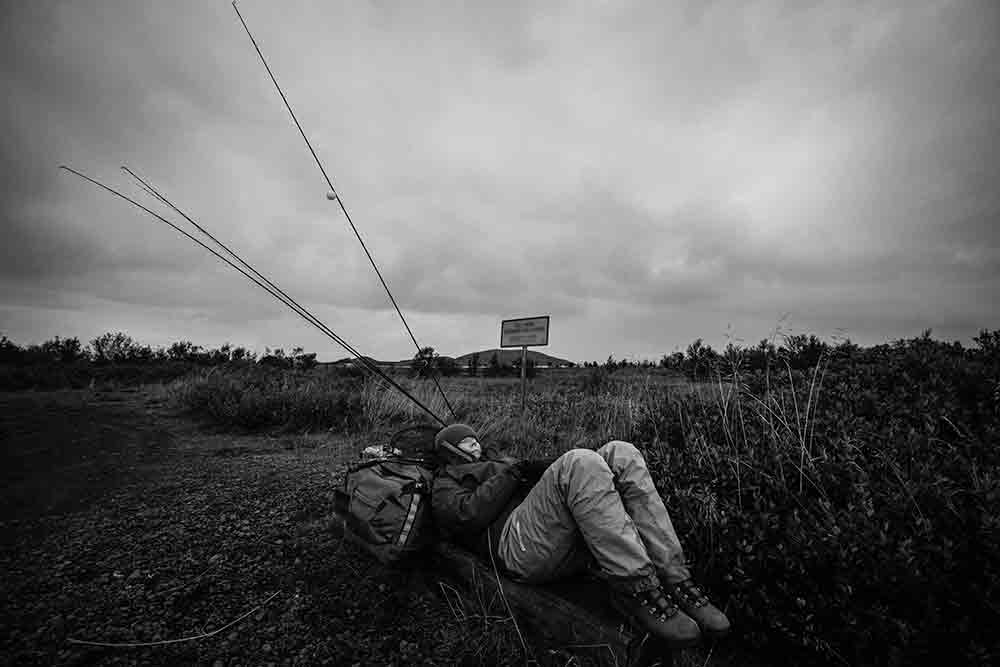
Just because we chose not to score each reel doesn’t mean that all reels are created equal. We all liked certain reels better than others, under our “Meet the Testers” section you can see each tester’s 5 favorite reels, (in order of preference).
We started our Reel Roundup by contacting manufacturers (and reps), asking them to send us reels. We always return the rods or reels we test in our reviews, so we are free to give you our honest opinions, good and bad. In some cases, due to supply issues manufacturers didn’t have reels, so we used reels from our own stock.
After receiving around 45 reels, we began closely comparing them. We wanted to take a dozen or so of what we felt were the best reels to Iceland, to properly test them against the elements as well as colossal ice-age brown trout. These browns are notorious for being spectacular fighters, even stronger than salmon and are capable of taking 200+ yard runs! Since the water is gin clear, these browns can see thicker tippet, and often require 4X fluorocarbon on bright days while fishing size #14 dries and nymphs. This demanded reels that would withstand long runs on light 4-6 lb. tippet. While we discovered some reels were more desirable to fish than others, we are happy to report that all the reels we took to Iceland were satisfactory, none of which failed in the field.
Then this past October, James and George took more reels with them to Argentina’s Jurassic Lake, where they were hooking and playing a lot of fish in the ten to twenty-pound range – fish that would just smoke the line off your reel in hard runs of 100 to 150 yards. Here smooth drag systems were especially critical, as you don’t want to lose that twenty-pound rainbow! Again, we are happy to report no reel failures.
During our initial impressions we looked at the quality of machining, tolerances between the spool and frame, rigidity, our forecasted durability, start-up inertia, range of drag adjustment, backing capacity, and the smoothness of each drag. In addition to our favorite 12 reels, we also chose what we felt were the best mid-priced reel – the Orvis Hydros IV ($289) and best inexpensive reel – the Reddington Behemoth 7/8 ($130).
There were a few high-end reels that we were unable to get to take to Iceland due to supply chain issues caused by the Covid-19 pandemic. These included the Abel Rove, Hardy Fortuna Regent, and Sage Enforcer, which showed up late. We decided to add these to our “main reel” write up as we think highly of them and feel they deserved a spot alongside our Iceland and Argentina favorites.
For various reasons, some within and some out of our control, we have not included a number of reel manufacturers 8-weight in this Roundup. These manufacturers market their reels in the United States and Canada, although some come from Europe. The companies are: Allen Fly Fishing, Aspen Reels, Bozeman Reels, Guideline, Loop, Mako, Islander, 3 Tand, Pflueger, Seigler and Vision.
There are many fantastic reels that deserved to go to Iceland and Argentina for further testing, but we simply couldn’t take them all. In order to refine our conclusions, (and frankly, to keep this page loading efficiently) we decided to publish a separate page which contains our reviews on the other 32 reels tested.
Click the link above or here to read our review on the additional 32 reels tested.
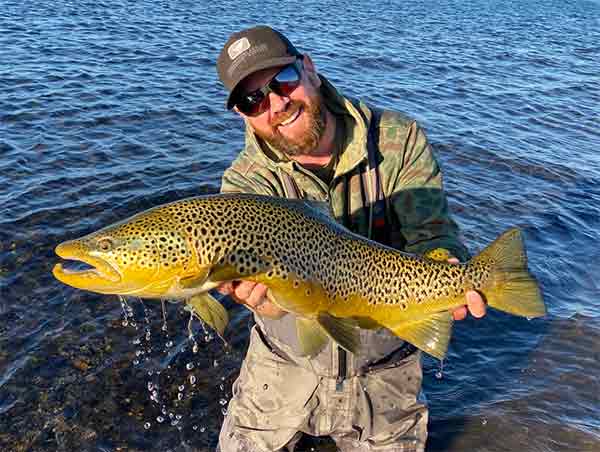
James Anderson, shop manager and part owner.
I first started working full time at the shop in the summer of 1994, as a junior in high school. I had a lot of great mentors to show me the way including my dad, (George), Jim Brungardt, Brant Oswald, and an amazing group of core guides who were all extremely knowledgeable and hardworking. In my 20+ years working in the shop and on the water as a guide, I have seen and fished a lot of reels. My top 5 favorite reels:
1. NVG 7/8 2. Tibor Everglades 3. Tibor Signature 4. Hatch Iconic 5. Abel Rove
My dad, George Anderson has been in the fly-fishing business for nearly 60 years, as a guide, fly shop manager, and owner. From technical 7X dry fly fishing, to being one of the first to fish nymphs with a strike indicator, to chasing tarpon and permit around the world, he has developed a rare combination of passion and skills matched by few anglers. Nicknames like “the Predator” (Joan Wulff) and “the River Rhino” (Tom Brokaw) still stick today. He has seen fly reels evolve over the years and knows what works and what doesn’t. George’s Top 5 favorite reels:
1. Einarsson 8 Plus 2. Tibor Signature 7/8 3. Hatch Iconic 7+ 4. Nautilus NV-G 5. Nautilus CCF-X2
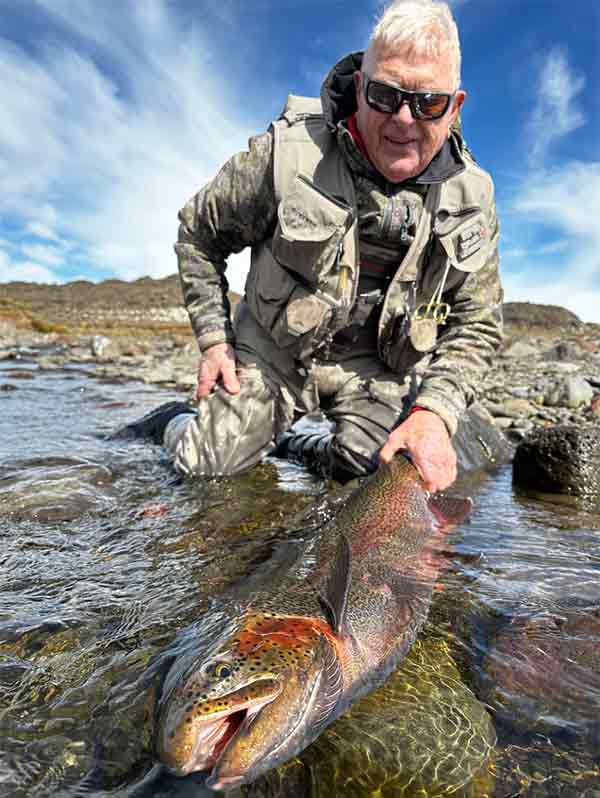
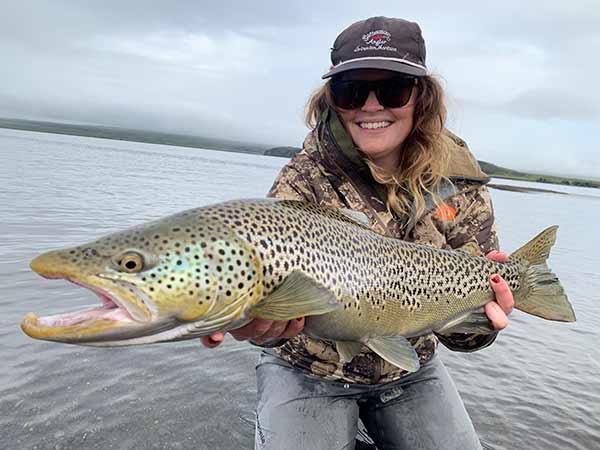
My step-daughter, Chloe Nostrant has worked at the shop for the past 7 years. During this time she has put together many women’s fly-fishing clinics with a focus on giving women more confidence. Chloe is responsible for a lot of the “behind the scenes” set ups that occur in our reviews, website, and point of sales system. Chloe has transitioned into being a full time photographer and fishing guide in Yellowstone Park and the Paradise Valley Spring Creeks, available through the shop. Chloe’s top 5 favorite reels:
1. Tibor Everglades 2. Einarsson 8 Plus 3. Hatch Iconic 7+ 4. Abel Rove 5. Nautilus CCF-X2
Logan Brown has worked at the shop for over a decade and has been our guide bookings manager since 2016. His perspectives on both rods and reels have been extremely valuable over the years as he has a knack for getting right to the point. Logan is a great angler, whether he is chasing big browns here on the Yellowstone or in Argentina catching some of the biggest Golden Dorado we’ve ever seen, he knows what is required of a good reel. Logan’s top 5 favorite reels:
1. Hatch Iconic 7+ 2. Tibor Everglades 3. Nautilus CCF-X2 4. Abel SDS 5. Bauer RX5
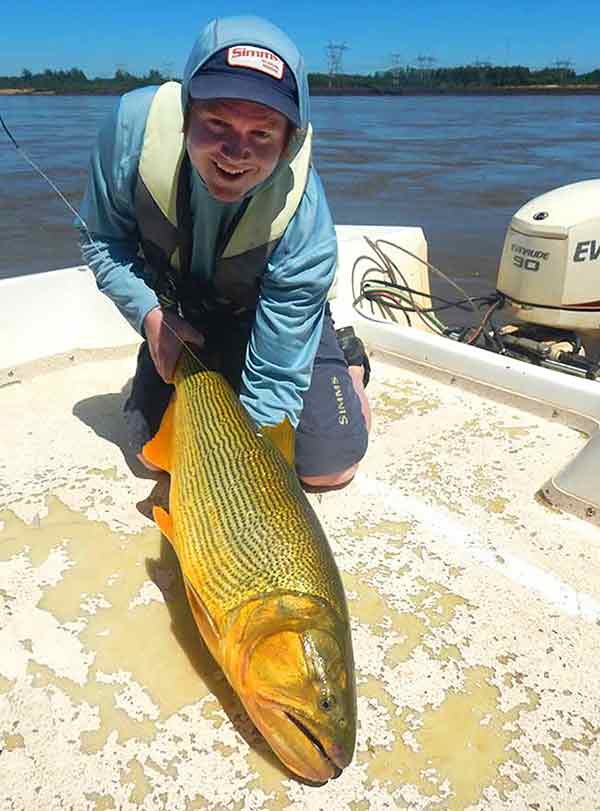
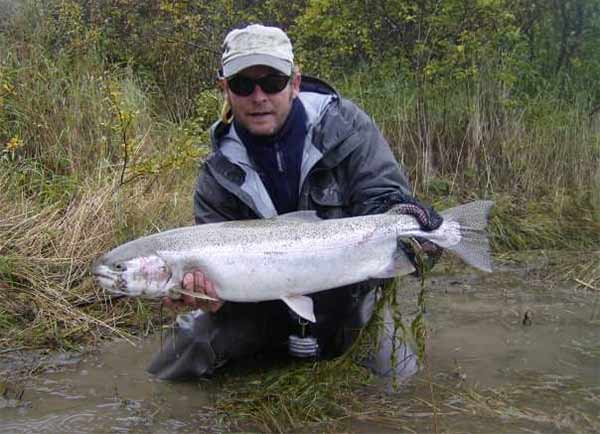
Ken Phillips, a shop employee, has been fly-fishing for over 40 years, and was adopted as the youngest angler in his Michigan angling club. While he is a bamboo aficionado and collector of classic tackle, his angling knowledge and styles of fishing are vast, including traditional upstream dry fly technique, to chuck and duck nymphing, or stripping streamers. Ken is also a master furniture maker, which allows him to think on the same wavelength as a reel builder. Ken’s top 5 reels:
1.Tibor Everglades 2. Bauer RX5 3.Tibor Signature 7/8 4. Hatch Iconic 7+ 5. Nautilus CCF-X2
Greg Louzan is a serious angler and has worked in our shop for 3 years. He spends much of his free time researching and perfecting the art of fly fishing and guiding. Greg has worked at several top-notch fly shops over the years and has seen (and sold) a lot of fly-fishing tackle. For the 2023 season, Greg is working full time as a Yellowstone Angler core guide. Greg has seen first-hand which reels have held up over the years and is a great judge of mid-priced and inexpensive reels since he has owned many and seen them flourish or fail. Greg’s top 5 reels:
1. Hatch Iconic 7+ 2. Tibor Signature 7/8 3. Nautilus CCF-X2 4. Abel SDS 5. Galvan T-8
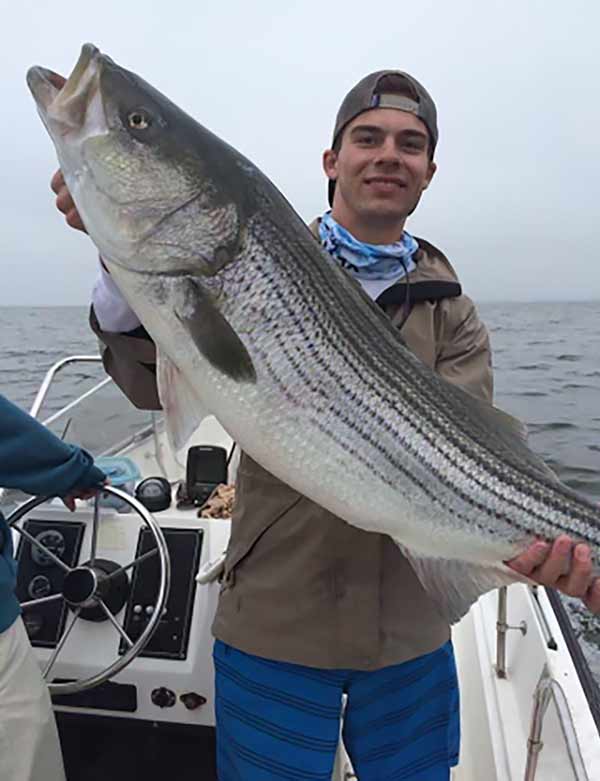
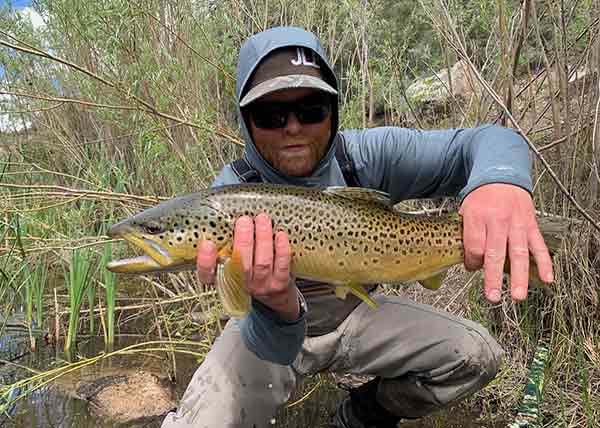
Justin Todd, another shop employee, was born in Billings and has been fishing the Yellowstone and other Montana blue ribbon streams since childhood. As park builder for Mammoth Mountain, Justin spent countless days off hiking and fishing high mountain lakes. His affinity for angling is infectious and the amount of time he spends on the water adequately supports his knowledge of reels and how they should perform. Justin’s top 5 reels:
1. Hatch Iconic 7+ 2. Nautilus CCF-X2 3.Tibor Signautre 7/8 4. Tibor Everglades 5. Abel SDS
Under each “Reader Comments” dropdown box, we will post notes and comments from anglers who have fished that reel. If you have fished one of the reels, please e-mail us your notes and comments about the reel so that we may post them. We welcome all feedback, whether negative or positive, and will publish comments that are instructive or interesting.

Strongest Maximum Drag – Ross Evolution R Salt
Least Maximum Drag – TFO NXT
Widest Range of Drag B/N 1/2lb. to 3lbs. – Galvan Torque, Galvan Rush
Least Range of Drag B/N 1/2lb. to 3lbs. – Hardy Fortuna, Sage Enforcer
Widest Range of Total Drag Adjustment – Nautilus CCF-X2
Least Range of Total Drag Adjustment – Orvis Mirage, Orvis Mirage LT
Lightest Reel (Without Line/Backing) – Ross Animas
Lightest Reel Fully Loaded (With Line/Backing) – Ross Animas
Heaviest Reel (Without Line/Backing) – Einarsson Invictus
Heaviest Reel Fully Loaded (With Line/Backing) – Einarsson Invictus
Largest Reel Diameter (Frame to Frame) – Lamson Litespeed M8
Smallest Reel Diameter (Frame to Frame) – Shilton SL5
Largest Arbor – Lamson Litespeed M8
Smallest Arbor – Orvis Battenkill Disc
Widest Spool – Einarsson Invictus
Narrowest Spool – Tibor Everglades, Tibor Signature
Most Expensive Reel (black) – Abel SDS
Least Expensive Reel – Greys Fin
Most Color Options – Abel SDS, Abel Rove
Least Likely Drag Failure – Abel Rove, Shilton SL5, Tibor Everglades, Tibor Signature
Most Backing Capacity – Einarsson Invictus
Least Backing Capacity – Abel Vaya
Largest Handle – Galvan Grip
Smallest Handle – Bauer RVR, TFO NXT
Loudest Outgoing Sound – Lamson Guru, Lamson Liquid (Both Higher Pitched), Nautilus CCF-X2 (Lower Pitched)
Quietest Outgoing Sound – Lamson Guru, Lamson Liquid (when plastic noise maker is cut / permanently removed).
Loudest Sound Reeling In – Tibor Everglades
Quietest Sound (No Sound Reeling In) – Bauer RVR, Bauer RX, Nautilus NV G, TFO NTR, TFO NXT
Best Quality / Nicest Reel Case – Abel, Shilton, Hatch
Lightest Reel Case – Lamson Liquid
Least Resistance Reeling In (Most Spin) – TFO NTR
Most Resistance Reeling In (Least Amount of Line Creep) – Hardy Fortuna
Largest Drag Adjustment Knob – Galvan Grip
In the words of Russell Chatham, “The reason that I use the kind of tackle that I use, is because I think it’s pretty, and it’s got history, and I love it. I love to hold it, I love to look at it, and so forth…”
While there are a lot of different criteria that go into buying a reel, looks play as big a role as any. While price affects the quality of a reel’s drag and durability, (especially for reels under $400), once you get into the top-tier price level all the reels have reliable drags and will all last a lifetime. When considering a more expensive level reel, an angler can usually decide solely on aesthetics and end up with a great reel.
Another major factor to consider when buying an 8-weight reel is the type of drag system the reel utilizes to create enough friction to slow the fish down when it takes off. The most common types of drags you will find for 8-weight reels include: click and pawl, cork discs, sealed cork discs, stacked discs, sealed discs, and conical drags. To read more about the differences in these types of drags scroll down to “Type of Drag” and also see our Objective Observation Table explanations, or click here.
We excluded reels with traditional click and pawl drags from our Reel Roundup as we felt they didn’t have a strong enough drag for general saltwater use. But reels like the Hardy Bougle, Cascapedia, Marquis, St. Aidan, St. Andrew are amazing in their own right, and suitable for big trout, steelhead, and salmon. While it is possible to palm a click and pawl, we felt these types of reels are better suited for freshwater use. In this 8-weight reel comparison we were looking for reels that handle fresh and saltwater equally well.
One of the characteristics we love about a reel is its sound. What kind of sound does it make when reeling in and what kind of sound does it make when a fish is peeling off line in a hurry. While it easy to state whether a reel has a loud or muted drag sound, it is very difficult to put the actual sound into words. We added WAV files below each reel’s photo so you can hear the retrieve and drag sounds yourself.
Another consideration is whether to buy a small, mid, or large-arbor reel. While many traditional click and pawl reels still offer small arbors, we did not include any in our Roundup. The reels you’ll read about here all have mid or large arbors, and a few even have “ultra” large arbors.
Mid-arbor reels have a smaller arbor (where your backing sits). On these reels the arbor is located closer to the center of the reel. Depending on the overall size and diameter of the reel, mid-arbor reels usually offer a greater backing capacity. But more backing also means more weight. Other downsides to a mid-arbor reel include slow line retrieval rates, more line memory, and more startup inertia (particularly when you are deeper into your backing).
Large-arbor reels utilize an arbor that is further away from the center of the reel. Large-arbor reels are becoming the standard as they offer a faster retrieval-rate, less line memory, and less startup inertia, even when you are deep into your backing). The downside is they offer less backing capacity. We’ve found in most cases, anglers can get around this by choosing Hatch 68lb. backing, which is much thinner than normal 20lb. micron. For saltwater fishing we like to use at least 150-200 yards of backing. For most freshwater situations 100 yards of backing is plenty, but in Iceland and at Jurassic Lake, we were looking for reels that could hold 150-200 yards of backing in addition to the fly line.
Ultra large-arbor reels have the largest arbors. The three reels in the Roundup that we consider to have ultra large-arbors are the Hardy Fortuna Regent, Lamson Litespeed M and the Nautilus CCF-X2 8/10. These reels offer the fastest line retrieval rates, should a huge bonefish decide to turn around and come right back to you at a high rate of speed. Of course you can always strip line to keep up, but then you have to be careful not to step on or get a tangle in the line (or backing) you just stripped in. The downside to an ultra large-arbor is they look massive and can feel awkward to reel in, often requiring different forearm muscles than just reeling with your wrist.
Some of the reel companies have taken the maximum drag to ridiculous levels. Unless you’re fishing for triple digit GT’s or billfish, a drag over 25 pounds doesn’t impress us. If a drag has the capability to create 30, 40, or 50 pounds of drag we actually see this as a negative for most fishing situations. Not only can it make a 7/8 weight reel heavier in hand, it can also cause a reel to fail by unnecessarily pushing it past its limits. Experienced anglers will know how much drag they can get away with for the class tippet they are using, but for beginners this can equate to more fish lost and even damage to the reel.
For most situations, if a reel has a maximum drag of 7-10 pounds we are happy. Even when fishing for tarpon we will often adjust our drag to a setting around 4-6 pounds and override it by palming the reel if and when we feel we need more drag pressure, or even using our thumb on the handle to temporarily lock the drag out (while pumping) and then reeling. These techniques are especially useful as you can quickly let go should the fish start to take off quickly, returning to your preset level of drag without having to touch the adjustment knob.
Another factor to consider is the range of drag adjustment, which refers to how many rotations it takes to turn your drag up or down. Some reels offer more range of drag adjustment and others offer less – both on purpose. To read more about the range of drag scroll down to our Objective Observations explanations or click Tested Range of Drag Adjustment between ½lb. and 3lb. or on Tested Range of Drag Adjustment (0-Max).
Anodization is a process that thickens the natural oxide layer on a metal’s surface. This extra thickness protects the metal’s surface and improves the aesthetics. Anodizing is achieved by submerging an aluminum reel into an electrolytic bath. A negatively charged electrode causes hydrogen to be released from the solution while oxygen is released at the surface of the positively charged reel. The result is a very strong durable finish that is more resistant to wear and corrosion.
There are three main types of anodization. Type I, also known as “light anodizing” and utilizes chromic acid to create a thin layer of extra protection. Type II anodization utilizes sulfuric acid which is more potent and makes a significantly thicker oxide layer. Type III, also known as “hard anodizing” uses the same process as Type II but with even stronger sulfuric acid and a higher voltage, creating the thickest oxide layer. Most anodized fly reels are type II since it is very difficult to add colors when using Type III anodization.
The COVID-19 pandemic has significantly impacted the end-to-end supply of goods. Material costs have gone up significantly due to fuel prices as well as a huge increase (over 500%) in the price of international shipping containers. What once cost manufacturers $4,000 to ship a 40’ container from China to the US, now costs over $20,000.00.
Labor issues have slowed down production time significantly as well. This combination of material and labor shortage has left many companies struggling to keep up with demand. In some cases you may have to wait up to 6 months to get the exact reel you want, so plan your purchase accordingly.
When purchasing an expensive reel, it is nice to know that you are fully covered should you encounter a defect in the materials or workmanship of the reel. We are happy to report that all the reels in our Roundup offer some form of a limited lifetime warranty. We have summarized each manufacturer’s warranty policy further below. Click here to read these policies.
While we decided against a “Final Results” chart with scored winners and losers, we felt an Objective Observations chart was useful. In this chart you will find numbers that are derived solely by measurement. Some of these figures come from the manufacturers and some were derived here at the shop. To read more about how we got these backing figures and an explanation of all of our Objective Observation categories, please scroll down towards the end of our review, or CLICK HERE.
In lieu of a scoring finish order, we decided to simply list the reels in alphabetical order. Below you can read my comments as well as others who have chimed in on certain reels. To read the other testers’ comments click on their name bar, (the blue bar with the plus sign on it).
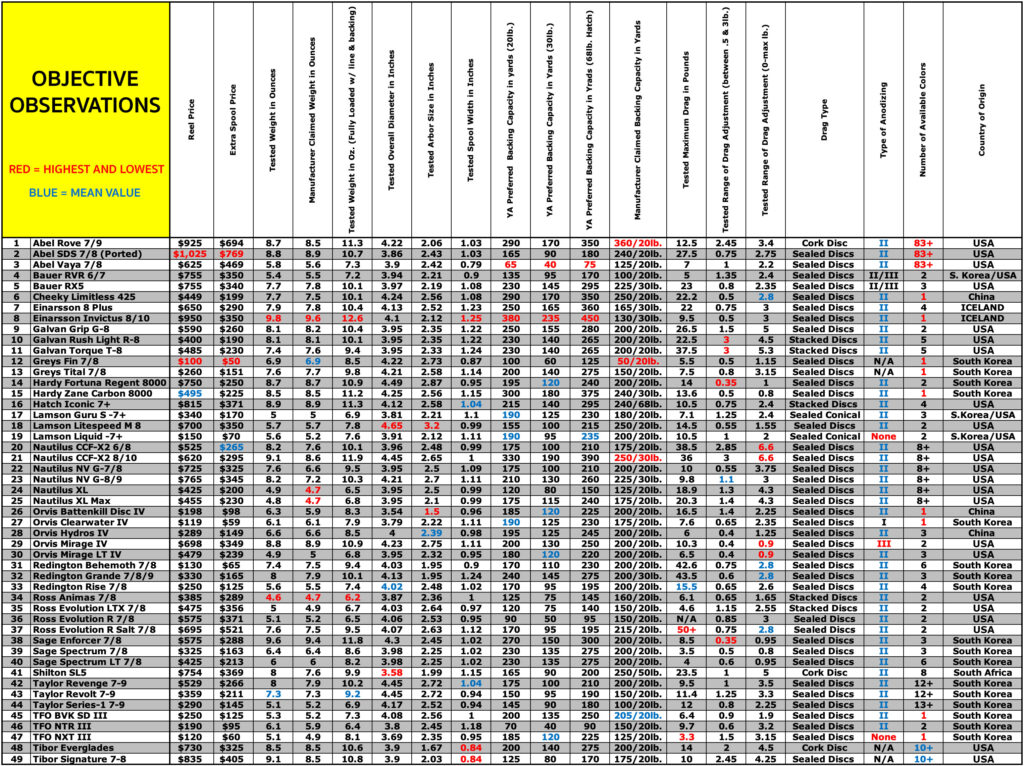
Don’t see the reel you are looking for? Click HERE to read our reviews on the additional 32 reels tested.
Upper Sound: Reeling In
Lower Sound: Drag Going Out
The Rove is Abel’s latest innovation, and what a creation it is! I liked the Rove more than the SDS, (which is saying a lot), and would gladly fish it around the world. The Rove is an evolution of Abel’s cork disc drag reels, from their original draw-bar cork disc style reels like the Big Game, to the number series (No. 3N reels), to the Super Series, to their quick-change version of the Super Series. After 36 years of production, Abel continues to make customers proud with this ultra-durable, highly reliable reel that replicates the same beautiful incoming sound as Steve Abel’s original reels from 1987.
The biggest difference anglers will notice with the Rove over the quick-change Super Series is the different shaped ported cutouts together with the now visible engraved drag plate.
The Rove employs a full frame design, making it ideal for spey or trout spey fishing, where sometimes the thin shooting line can escape between the spool and frame of a non-caged reel. The caged frame also helps with durability in the unlikely case that you drop this reel, (personally, I would hold it like someone’s baby). I prefer the larger aluminum handle over the wood handle as it can never swell, split, or break – something well worth the extra $30.00. The counterbalance is as good as it gets, insuring no lateral movement of the spool during high-speed runs. The knurled drag knob is easy to turn and solid detents are used to keep its setting.
The Rove looks amazing even in standard black, but I really like it in the Deep Green, and all the fade color options. You can easily choose a color that will match well with your favorite 7 or 8-weight rod. Add a Larko or Underwood engraving to a solid color or fade and you really have a work of art. Add a colorful DeYoung or fish graphic and you’ll have the perfect reel to target your favorite species, and impress your fishing buddies. Be sure to check out Abel’s build now page to see their immense array of color options.
Although the Rove is not a true draw-bar style reel, I would put the Rove in the same category as the Tibor Everglades and Shilton SL5 in terms of bulletproof reliability. While I love the modern style of sealed disc drags, there is something to be said for a reliable cork drag that simply cannot fail in the field. I always have a few reels with me on a trip as backup, and it feels good knowing at least one of them can’t burn up.
One thing I like about the Rove over the older Abel reels, is the method by which the spool engages with the frame. To remove the spool, simply back the drag off all the way, (watch as the metal center of the spool comes out), allowing you to take the spool off the frame, much like an Islander LX or the later Super Series reels. This eliminates any of the paranoia involved in losing the drag knob nut with the older draw-bar reels. To put the spool back on, simply reverse the process and tighten your drag until the spool is seated properly, (you’ll know by that classic deep sound when reeling in). Just remember not to store your reel with the cork drag compressed too tightly.
If there is an Achilles’ heel to the Rove, it’s fishing in the winter when the temperatures are below freezing. If you get the reel wet by accident, (presumably when breaking the ice off your guides and your reel dips into the river), you are essentially done. A thin layer of ice will develop between the cork and spool, making it impossible for the cork to create any resistance or friction. Also, some may worry that this reel is not maintenance free, but it’s easy to spray it off with fresh water after fishing and add a little grease or neatsfoot oil to the cork periodically.
Abel provides the nicest reel case on the market, which fully covers and protects your reel during transit. We have always loved the Abel reel case design as it is oversized and easy to use. The latest rendition is even more plush, utilizing a tough premium nylon outer shell (with a leather logo patch) and a velvet like microfiber fleece on the inside, that wicks moisture away from the reel. Be careful not to lose it or let your fishing buddy “mistake” it as his or hers, however; or it will cost you $90.00 to replace it.
Upper Sound: Reeling In
Lower Sound: Drag Going Out
The award-winning Abel SDS (Sealed Drag Salt) series catches as many eyes as it does fish. An absolute stunner, this reel is the pinnacle of aesthetics and performance. Even the standard black is gorgeous, although we suggest you check out Abel’s Build Now website to see the most complete choice of colors and killer graphics the world has ever seen on fly reels. An additional solid color will run you around $150 extra, a fade $300, standard graphics a smooth $400, and artistic graphics will cost you an extra $600-1200. Delivery can take up to 6-8 months, so plan early if you are buying one as a gift. But remember, these reels are hand painted before they hit the anodizing tank and are truly one of a kind. You will love looking down at your reel when the fishing is slow. Once you have joined the afterlife, your children are going to fight over it – so consider getting enough for all your heirs to cherish after you are gone.
I have owned both handles, (the wood style and the aluminum) and have loved both. I have had to replace one wood handle that cracked down the middle, leaving me with a skinny metal spindle for the rest of the day/trip. It was an inexpensive repair when I got home but I choose the bomb-proof aluminum handles for that reason now. The counterbalance on the SDS is flawless, leaving no high-speed wobbles when a fish peels line off at a blistering pace. I like the oversized drag knob which is easy to turn while the stiff detents keep its setting.
The maximum drag on the SDS is overkill for sure, but then again maybe someday I will go to Kauai and fish for yellowfin tuna. We tested the max drag at 27.5 pounds, which should satisfy the likes of any saltwater captain.
We have found two potential Achilles’ heels with the SDS, but both can be worked around easily. The first is that the thin washer under the spool release cap can easily become dislodged. If it does, you must push it back into a centered position before screwing the spool release cap back down. Pretty simple fix, but slightly annoying for a $1000 reel. The second is that we have found the small Allen set screw hole can be a possible point for water entry into the sealed hub. The screw’s purpose is to keep the top gold spindle cap from turning, (you must take this off in order to switch the drag direction). Our cure for this is to use Teflon tape (white plumber’s tape) on both the Allen set screw and the gold spindle cap, which insures water cannot enter there. The reel case is the same beauty that comes with the Rove reels.
Upper Sound: Reeling In
Lower Sound: Drag Going Out
Before John Bauer got into making fly reels, he successfully raced Porsche 911’s from 1975 to 1987. This unique background and understanding of race cars and precision technology gave John a different perspective on how a reel should function. The Bauer RX5 is one of a kind, and a true testament to John’s innovation in drag design.
Like many reels, the RX5 utilizes stacked carbon discs that create the drag resistance. The innovation lies with the RX5’s unique clutch system. Bauer’s patented “zero backlash” clutch is designed to transfer torque in one direction, (engaging the carbon discs to create drag resistance) and “free spool” in the other direction, (making it smooth and effortless to reel in line).
In the world of fly reels, it is unusual when a manufacturer builds their own clutch – as opposed to using off-the-shelf roller clutch bearings. Bauer’s patented “zero-backlash” clutch provides a smooth, instantaneous, and seamless engagement of the drag with minimal startup inertia. Manufactured from non-corrosive materials, the clutch is designed for durability and reliability. The simplicity of the Bauer Clutch ensures dependable performance for when it matters most.
The fully-machined RX5 is an attractive reel, with a good balance of being heavily ported yet super solid. The RX5 can take serious punishment and definitely qualifies as an “heirloom” reel that can be passed down from generation to generation. The large wooden handle is easy to grab and due to its flared-shape, my index and thumb don’t slip off the handle. The counterbalance is one of the smoothest we have encountered with no high-speed wobbles, ensuring a smooth fight. The striated spool release cap is easy to turn. A large, similarly striated drag knob is utilized that is easy to turn and has solid detents to keep it from getting knocked off the desired drag setting.
There is no sound reeling in, and the RX5 has a muted outgoing sound. A large, nicely ported arbor is utilized which not only improves line retrieval rates but also allows your backing to dry quickly. A neoprene case is included that fully covers and protects your reel during transit.
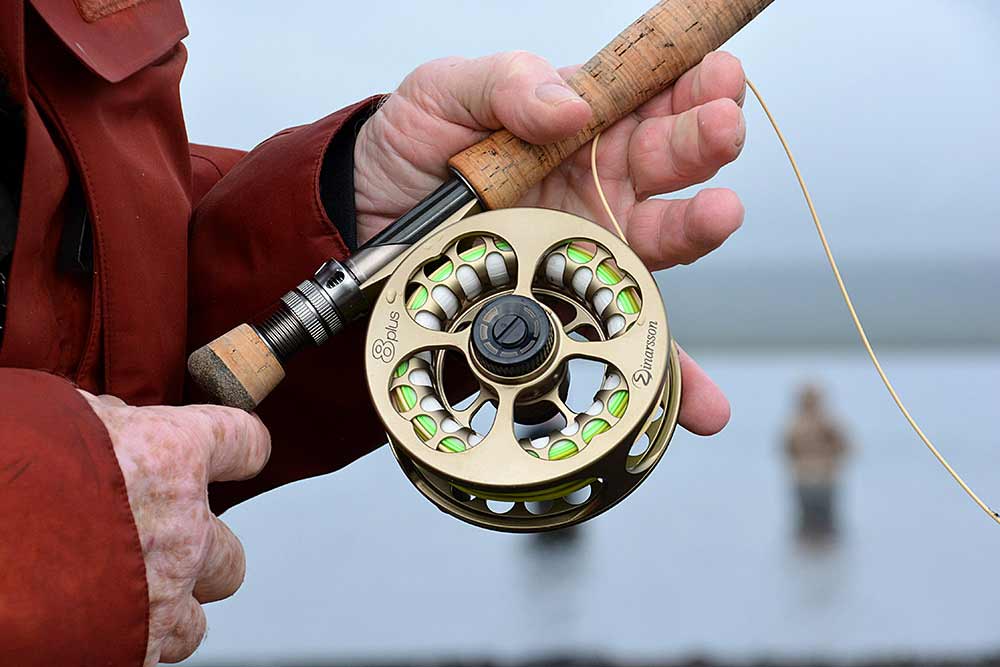
Upper Sound: Reeling In
Lower Sound: Drag Going Out
We tested the Einarrson Plus series reels in our 2014 8-weight Reel Shootout and they have been among our favorite reels ever since. The quality of machining that goes into producing the 8 Plus is simply outstanding. Not only does the 8 Plus look amazing, but it’s also a well-rounded, all-star performer.
A large, slightly flared handle is utilized that is easy to grab without looking. The counterbalance is as good as it gets, making the 8 Plus one of the smoother reels on the market with zero lateral movement between the spool and frame at high-speed. The striated spool cap is easy to turn, however it can come completely off the spool, so be careful not to drop it. A rubber o-ring is utilized to keep water out of the top of the hub. The medium sized drag adjustment knob also utilizes a striated edge and is easy to turn. Solid detents are used to keep it from getting bumped from the desired drag setting. An identical, (and pleasant) sound is made when reeling in or outgoing. The drag is exceptionally smooth, and we like the range of drag as well. The max drag, at 22 pounds, is likely more than any angler will ever use.
I like the large arbor and also the wider spool width of the 8 plus. Some anglers may prefer a thinner width spool, but I have never had an issue reeling up line unevenly, (creating a line jam) as I reel with the incoming line under my pinky back and forth, which guides the line onto my spool evenly.
Two large torque screws secure the foot to the frame. A quality neoprene case is included that fully covers and protects the reel during transit.
Upper Sound: Reeling In
Lower Sound: Drag Going Out
The Galvan Torque is a perfect blend of toughness and elegance, resulting in a lightweight reel at a great price. The machining quality is excellent, with many intricate cutouts on the arbor, the drag knob, and even the reel foot. All of which not only looks cool but cut down on weight. The arbor cutouts are a nice addition to the less expensive Galvan Rush Light, as they allow air to flow through and dry backing faster. The spool release button is very easy to depress, allowing easy spool removal, in case your leader found a way to wind into the frame and tangle around your drag plate (as sometimes occurs in transit). The handle on the Torque is large and utilizes a taper that gets larger further away from the reel, making it very easy to find without looking, and the material used does not get slippery when wet. The counterbalance on the Torque is excellent, showing no wobbles at high-speed. The reel foot is attached by three screws and is very secure. The Torque reels come with a nice neoprene reel case that covers the reel well.
The Galvan Torque drag utilizes a stacked disc drag that is much thinner than other companies’, yet is capable of creating over 37 pounds of drag, one of the strongest drags we’ve ever tested!
A unique style of plastic pawls (held together by a wire) is used to make the sound of the drag, which is slightly louder reeling in than going out. One thing we love about the Torque reels is their extremely wide range of drag settings. If you are fishing for monster browns on 4-5X tippet, the Torque will enable you to find the perfect amount of drag you desire. You’ll have three full turns of the drag knob to adjust between half a pound and three pounds of drag pressure, which was easily the best in our Roundup. With negligible start up inertia, we found the Torque was one of best reels for fighting big fish on light tippet.
Upper Sound: Reeling In
Lower Sound: Drag Going Out
For the full-fledged flats angler, the Hardy Fortuna Regent offers a lot of terrific saltwater specific features. First and foremost is the ultra large arbor, (4.49 inches) second in size only to the Waterworks Lamson M8, (4.65 inches). This equates to incredibly fast line retrieval rates, allowing the angler to pick up more line per revolution when reeling in. The arbor is also heavily ported, which not only reduces weight but also allows for your backing to dry quicky. A large paddle-style handle is utilized that was easy to find and grab without looking. A low-profile counterbalance helps avoid possible line wraparounds. The counterbalance is very good, (with little lateral movement of the spool inside the frame at higher speeds). The grooved spool release cap is easy to turn and is kept on the spool by a large o-ring. The similarly grooved, medium sized drag knob is easy to turn, although it has more resistance at higher settings. Strong detents are used to keep the knob from getting accidentally knocked off the desired drag setting.
The Fortuna Regent has a narrow range of drag settings. Many saltwater tournament anglers will appreciate its ability to adjust from zero to max drag (or vise-versa) with minimal turning. We still prefer a wider range of drag adjustment, especially for anglers planning to use the Fortuna Regent in both salt and freshwater. The maximum drag of the Fortuna Regent 8000, (14 pounds) is significantly less than the original Fortuna XDS, (32 pounds). We actually see this as a positive, as it keeps weight down and no one, except perhaps anglers targeting tuna, GTs or billfish, would ever think about using that much drag pressure. Changing the drag direction on the Fortuna Regent is straight forward, but you must be careful not to lose the tiny aluminum shaft that sets the ball bearing unit in place. This can be a little fussy, so likely best to have a shop do it for you. Hardy includes a quality neoprene case that fully covers and protects the reel during transit.
Upper Sound: Reeling In
Lower Sound: Drag Going Out
The aptly named Iconic is Hatch’s best reel to date. Hatch made some significant improvements to the Iconic from the older Finatic, but none as noteworthy as the new sealed hub. The Iconic allows access to changing the drag direction by rotating the entire hub rather than relying on an Allen set screw hole, which we found was a spot for possible water entry in the Finatic. While many who fished the Finatic never ran into this issue, (likely never getting out of the flats skiff), we feel this is a significant improvement for the Iconic, making it a contender for the best 8-weight reel on the market. Other improvements include a ported arbor, which allows backing to dry better. The neoprene reel case is also improved and now fully covers and protects the reel. Along with the Abel reel case, we feel this might be the best design, especially if you use rod vaults on top of your car, that require a less bulky reel case.
Thankfully Hatch kept the same aesthetic look for their spool and frame, which are as stunning as ever. We sell 9 times as many large arbor reels as mid arbor, since most anglers tend to buy Hatch backing with Hatch reels, and the large arbor offers plenty of capacity for most situations anyway. The larger arbor helps with faster line retrieval rates without adding the extra weight of more backing, keeping the weight down for a 7+ when it is fully loaded with line and backing. If you feel your fishing circumstances call for more than 295 yards of Hatch 68 pound backing then opt for the mid arbor, for all other purposes the large arbor will likely be better.
The medium length (but girthy) aluminum flared handle is easy enough to grab without looking. Once you jump up to a 9+ or 11+ a longer handle is used, which I prefer. The counterbalancing itself is excellent, with zero lateral spool movement and no wobbling at high-speeds. The striated spool release cap can be difficult to turn at times, so having a leader straightener or piece of rubber in your tackle bag is a good idea, especially for those with arthritis setting in. The large striated drag knob is much easier to turn, with strong detents to keep it in place. The reel seat is fully machined into the reel, which means it can never wiggle lose on you like reel feet that are secured to the frame with screws. This must cost Hatch significantly more in aluminum, since they must machine the reel from a larger puck. The only downside to this style of reel foot is that if you do drop the reel perfectly and bend the foot beyond repair, you will have to replace the entire frame.
Upper Sound: Reeling In
Lower Sound: Drag Going Out
Waterworks Lamson continues to push industry limits with their latest saltwater reel, the Litespeed M (Marine) series. There are a lot of nice features to this reel, the most stand out being the 4.65 inch ultra large arbor – the largest of all the reels we tested. If you are looking to maximize your line retrieval rate, you won’t find a better performing 8-weight reel than the M8. Lamson wasn’t the lightest reel we tested but it is definitely a very light reel. Fully loaded with line and backing it only weighs 7.8 ounces, less than many reels before adding line and backing!
The large flared handle is easy to grab without looking. In lieu of a traditional counterbalance, Lamson ports less aluminum out of the spool on the opposite side of the handle. We found this worked perfectly with zero high-speed wobbles or lateral spool movement. The spool release cap is much thinner than others, utilizing two aluminum protuberances that can be a little hard to turn. So far we haven’t had to use rubber or a leader straightener to twist it, but this could be a spot where saltwater crystals develop, so be sure to spray this area down well with freshwater after use. The medium sized, ported drag knob is easy to turn and has solid detents to keep it from getting bumped off the desired drag setting. The range of drag between half a pound and three pounds is sufficient, ditto that for the maximum drag. The fully sealed drag hub also appears to be legit and should keep moisture out. The spool to frame tolerance is tight, and the rim of the spool is relatively thin, so you will want to be careful not to drop it or the spool may dent and rub on the frame.
There are two color options for the Litespeed M series, Ultramarine, a bright turquoise, likely a tribute to the bright blue water you will find when fishing the flats, and Riviera – a light gray but with an Ultramarine spool release cap. Lamson provides a neoprene reel case, however; we found that it does not fully cover or protect your reel as well as other cases.
Upper Sound: Reeling In
Lower Sound: Drag Going Out
The CCF-X2 is an amazing reel – hence the high demand, low supply phenomenon associated with it. Plan accordingly, as currently it may take up to 3-4 months to get one in your hands, and even longer if you are interested in a custom color. Be sure to check out Nautilus’ Custom Shop where you can virtually visualize 8 different spool/frame colors as well as 8 different “small parts” colors. You can easily choose a color that will match or highlight your favorite 6, 7, or 8-weight rod.
I love the “purring” sounds of the CCF-X2. The incoming and outgoing sounds are nearly identical, although sund when reeling in it seems lower pitched, (due to the slower speed of reeling in), than the higher pitched sound of the outgoing drag at higher rotation. All of the CCF-X2 reels sound the same from the 6/8 up to the Silver King. For anglers who prefer no sound when reeling in the NV G is the way to go – buy one while you can, however – as they are already discontinued.
The CCF-X2’s oversized, flared handle is perfect. This size and shape is my favorite of all the reels we tested. Its traditional counterbalance works perfectly with zero high-speed wobbles or lateral spool movement within the frame. Nautilus utilizes a large arbor, which is a normal large arbor for the 6/8, but huge on the 8/10 for those looking for even faster line retrieval. I’m a little surprised Nautilus didn’t port out the arbor more, which would make the reel lighter and also allows backing to dry faster.
I’m also surprised at how difficult it can be to turn the spool release cap! The large knurled cap appears to be easy to turn but we have found the exact opposite –Nautilus’ only flaw. At first, we thought perhaps the change in air pressure from flying, (during shipping or traveling) somehow tightened these caps down but apparently they can self-tighten with normal use. Our hack for turning a “stuck” spool release cap is to get more grip on it by using a leader straightener or a piece of rubber, (something similar to a jar opener). You will definitely want to carry something like this in your tackle bag. Incidentally, the 6/8 is the most difficult of the CCF-X2 sizes to turn as there is not as much space around the cap to fit your fingers around it. The larger sizes, however, have more room.
The knurled drag adjustment knob is large and one of the easiest to use, even for older anglers with arthritis. Strong detents are used to keep the knob from getting knocked off the desired setting. I like the sealed drag on the CCF-X2, which utilizes three small Allen set screws to secure the hub, along with an o-ring which keeps any moisture out that may have entered through the screw holes. I also like that you can take this drag apart and dry out the discs should any moisture make its way past the o-ring. Don’t try this on the boat, but it’s something that could be done back at the lodge – verses having to send it back to the manufacturer after your trip. Nautilus includes a neoprene case that fully covers and protects your reel during transit.
Upper Sound: Reeling In
Lower Sound: Drag Going Out
It’s a shame the NV G series has been discontinued in 2023 because it was my favorite of all the reels we fished in Iceland. If you can still find one of these from a dealer or on e-bay, I recommend purchasing one. They are heirloom quality and will be a cool reel for whoever is lucky enough to inherit them.
For a 7/8 weight reel the NV G is the perfect size. Although it doesn’t have as large an arbor as some, it is plenty fast enough at retrieving line, even when a 30 plus inch brown decides to turn around and come back at you with bursting speed. The large arbor is fully ported, which cuts weight and also allows your backing to dry quickly.
I love the oversized, flared handle. It is easy to grab without looking and my fingers never slipped off of it, even when it was raining. The positioning of the handle also feels ergonomically perfect, allowing my wrist to rotate comfortably as I reeled in quickly. Some of the largest arbor reels felt awkward, and required more lower arm movement, which for me led to more fatigue. A traditional counterbalance is used on the NV G, which produced rock-solid, smooth runs with zero lateral spool wobble at high speeds. A small knurled drag adjustment knob is utilized which is easy to turn. People seem to like the larger CCF-X2 drag knob better, but I had zero issues turning this one.
The sealed drag hub is excellent on the NV G reels, and unique in the fact that you must order them right hand or left hand from the factory. This is an advantage as you never have to open the hub to change the direction of the drag. There are no Allen set screws or any areas in which moisture can get into the drag, a big plus and something that gives you confidence when fishing an un-openable sealed disc drag reel in some far corner of the world.
The only thing I don’t like about the NV G is the same overtightening spool release cap issue found on other Nautilus reels. (See our discussion of the CCF-X2).
Nautilus includes a neoprene reel case that fully covers and protects the reel during transit.
Upper Sound: Reeling In
Lower Sound: Drag Going Out
The XL Max is one of the lightest, most high-performing reels that we tested. The uniquely shaped “X” frame significantly cuts down on weight while still maintaining structural integrity. I think the X series reels are a happy medium between light but still being durable enough to pass the parking lot drop test. One thing I noticed while fiddling with the X is that your leader can work its way between the spool and frame, wrapping around the drag hub more easily than a full framed or caged reel. The good news is this won’t happen while you are fishing as the leader will be outside the rod tip and the line is thick enough that it can’t escape the spool to frame tolerance gap. During storage and transit however, you might use a rubber band over your line/leader to keep it from wrapping around the drag hub.
The medium sized flared handle is smaller than the handle on the CCF-X2 or NV G, however; it still works well and is easy to grab without looking. Unfortunately, the spool release cap can be very difficult to turn and can feel “stuck.” The large, knurled drag knob is easy to turn and has strong detents to keep it from getting knocked off the desired drag setting.
One thing I love about the X-series reels is how smooth the drag sounds and feels. The large arbor makes for quick line retrieval rates, even on the XL Max, which is more of a mid-to-large arbor. The counterbalance on the X-series reels is excellent, with zero lateral spool movement, even at high speeds. For anglers who are in search of a lightweight reel, that has an impressive maximum drag and fast line retrieval rate, the X series is hard to beat!
The Nautilus XL and XL Max spools are interchangeable on the Nautilus XL frame. The easiest way to tell the difference in the spools is the XL Max has the words “Max” laser etched, just below the counterbalance. The XL Max spool also has a medium arbor, which has a greater backing capacity than a large one. The XL is lighter, but not significantly. Fully loaded with line and backing the XL weighs 6.5 ounces, the XL Max weighs 6.8 ounces – only a difference of .3 ounces. We chose the XL Max for Iceland as it offered more backing capacity for browns that have the capability to run 150-200 yards into your backing. The XL Max comfortably holds 240 yards of Hatch 68 pound backing, (90 more yards than the XL), 90 yards of 30 pound backing (35 more yards than the XL), and 175 yards of 20 pound backing, (55 more yards than the XL). For most saltwater anglers, the XL Max is going to be a better choice. For most trout anglers, the XL size is likely the best choice – unless backing capacity is an issue. The same size handle is used on both spools. Something Nautilus might look into is making a bigger handle / counter balance for the XL Max spool. A quality neoprene case is included that fully covers and protects your reel during transit.
Be sure to check out Nautilus’ Custom Shop where you can virtually visualize 8 different spool/frame colors as well as 8 different “small parts” colors. You can easily choose a color that will match or highlight your favorite 6, 7, or 8-weight rod.
Upper Sound: Reeling In
Lower Sound: Drag Going Out
Here is our “best buy” reel of the 2023 Reel Roundup. This is a lot of reel for $289.00. To start, the Hydros reels are fully machined out of high-quality aluminum with a matte type II anodized finish. Utilizing a hub-style fully sealed drag, the Hydros is virtually maintenance free. It’s not the lightest reel but still considered very light, (fully loaded with 245 yards of Hatch backing it weighs only 8.5 ounces). Although the handle is a little thinner than most, we liked the large size and it is easy to grab without looking. The counterbalance is excellent, insuring no high-speed wobbles. The spool latch works well and the drag knob is easy to use. We wish the range of drag was wider in between half a pound and 3 pounds. (For those who prefer more range of drag consider a $111.00 upgrade to the Galvan Rush). The Hydros comes with a quality neoprene case that fully covers the reel during transit.
One issue that has been brought to our attention from a couple of returned Hydros reels was the fact that the noise maker on some 2021 Hydros reels was causing grooving damage to the top cap of the sealed drag housing. This was a surprise to Orvis since the metal pin had worked flawlessly for years in both the Battenkill Disc and earlier Hydros reels. It was learned Orvis’ manufacturing partner had changed the pin source due to a supply chain issue, unfortunately resulting in 8% of the reels causing metal to metal grooving damage. A new Delrin pin solved the issue. For all Hydros reels with this issue, dealers or the consumer can contact Orvis for a pre-paid return label and no-charge warranty service. Because 92% of the reels have performed as designed, there was no recall and Orvis will simply fix affected reels.
As soon as we found out about this, we sent all of our “metal pin” reels back to Orvis, which they promptly replaced with Delrin pin reels – so any Hydros series reels purchased from the Yellowstone Angler are good to go.
Upper Sound: Reeling In
Lower Sound: Drag Going Out
Although we were field testing reels in freshwater, we wanted our pick for the best inexpensive 8-weight reel to be able to handle saltwater fly-fishing as well. In our opinion, the Behemoth fits that bill. It is the least expensive reel that we’ve found that will perform well in both fresh and saltwater. Whether you are targeting big browns on light tippet, or the blistering bonefish of the Bahamas, the Redington Behemoth will hold its own.
Although the Behemoth is a die-cast reel, it feels sturdier and more rugged than other non-machined, molded reels, which tend to be more prone to accidental breakage. It is also quite innovative, notably the “V” shaped spool design, whose ported spokes, (from what we are told) are too complicated to machine out of barstock aluminum anyway. The intricate way in which half of these “spokes” fit into the drag hub is unique. The twin molded, soft touch ergonomic handle is another innovative design that we have not seen on other reels, and allows for superior grip when wet. While Redington claims the Behemoth has one of the most powerful drags in its class, we found it has one of the strongest maximum drags of any reel we tested. For those who are looking for similar drag power and design in a fully machined reel, you can upgrade to Redington’s Grande for $200.00 more.
The spool release cap feels a little cheap, (plastic) but works well enough and can’t come off, so you’ll never drop it or lose it. The large knurled drag knob is easy to grab. In the lighter settings, the detents aren’t quite strong enough to keep the drag knob in place, however the concave design on the back of the frame keeps the knob from hitting objects. We wish the Behemoth had a wider range of drag, and a perfect counterbalance, but for the money it is hard to complain! Redington includes one of the nicest canvas reel cases we’ve seen for an inexpensive reel.
Upper Sound: Reeling In
Lower Sound: Drag Going Out
We found the Evolution R Salt has the best “power to weight ratio” of all the reels tested in our Roundup. That is to say, if you are looking for the lightest reel with the most powerful drag – this is it. Although Ross claims 30 pounds of max drag pressure, in our testing the Evolution R Salt had the strongest maxium drag, burying our Rapala digital scale at over 50 pounds! The next strongest drag was on the Nautilus CCF-X2 at 38.2 pounds of max drag. Both ridiculous and unusable by 99% of anglers, except possibly for those fighting billfish, tuna, sharks, or GTs. But it’s nice to know that your reel’s drag can perform at a level you’ll likely never experience or need.
To achieve this much drag, Ross features a supercharged 16-disc sealed drag system (as opposed to Evolution R’s 7 disc system). The spindle on the Evolution R Salt is also thicker and stronger, making it more reliable, should a leviathan be your quarry. But the innovation doesn’t stop there. An industry first, Ross utilizes two smaller counterbalances on the Evolution R Salt, reducing mass (as well as the chance of catching your line on a single, taller counter balance), while creating perfect vibration-free performance, ensuring no high-speed wobbles when line is being ripped off the spool on fast runs.
The drag knob is also unique, employing a large wheel that can be turned using your palm without looking, rather than grabbing and turning it with your fingers. Keeping your eyes on the fish and how it is fighting definitely helps in landing more fish. While we were able to change the drag without looking on other reels, Ross makes this a no brainer.
Another innovative part is the large handle, machined out of a canvas phenolic rod, which reduces weight, adds durability, and increases grip when wet. While Ross uses this same material and tapered shape on their other reels, we prefer the over-sized handle found on the Evolution R Salt the best. 4 screws are used to attach the reel foot to the frame instead of two.
The only thing I don’t like about the Evolution Salt R is the fact that the spool release can be very difficult to turn. The solution that makes this much easier, is to use a leader straightener or jar opener, which gives more positive traction, making it much easier to turn the spool release cap. I also wish Ross included a reel case more similar to Abel’s, as it would completely cover and protect the reel during transit. As is, the neoprene reel case provided doesn’t cover 100% of the reel, and an unlucky drop could result in your reel foot being dinged or bent.
Upper Sound: Reeling In
Lower Sound: Drag Going Out
We’ve seen a lot of Sage reels over the years and the Enforcer is one of their best offerings to date. The Enforcer utilizes a significantly more powerful drag than the Arbor or Spectrum series. It also feels a lot more durable, with increased rigidity and enlarged seals that improve its capability to keep water out of the enclosed drag housing. The fit and finish have also improved from what we have seen in Sage high-end reels in the past. The satin/matte finish is very attractive, although the laser etched logo on the spool release cap and above the drag knob look a little less expensive. The large tapered handle is easy to grab and the counterbalance is near perfect, ensuring no high-speed wobbles. The knurled drag knob is huge and very easy to adjust, with nice detents to keep it in place. While we like the added numbers a lot, we wish there was a little more range of drag adjustment, (although we recognize the fact that many saltwater anglers will appreciate less drag adjustment). The large arbor will be great at retrieving line quickly, however we wish the porting continued to the middle of the spool to help dry backing faster. 3 screws are utilized to secure the foot to the frame rather than two, (as with the Spectrum and Spectrum LT).
The max drag on the Enforcer 7/8 tested just over 8 pounds, which is half a pound more than Sage’s advertised max drag. The 9/10 should boost max drag up to 15 pounds, and to 17 pounds in the 11/12 size. The same lower pitched sound is used for outgoing drag and retrieval. Changing the drag direction is easy, although we found it helped to tap the reel up-side-down (to loosen the bearing), followed by a Fishpond net magnet to pull it the rest of the way out of the hub. This is a job that any shop can perform. A neoprene reel case is provided that fully covers and protects the reel during transit.
Upper Sound: Reeling In
Lower Sound: Drag Going Out
Tibor “Ted” Juracsik, the Hungarian refugee legend, behind Tibor reels for over half a century is aptly credited with revolutionizing fly fishing with his innovative and stylish reels. Tibor reels are universally held in high regard by serious and skilled anglers whether in fresh or saltwater. They appeal to those wanting high functionality, ease of use, and simple maintenance, and will last generations. To learn more about Ted’s life, his innovations, and his reels you can visit the Anchored and Millhouse pod casts.
The Tibor reels all utilize a cork disc drag, that is pressed into the back of the spool by a draw-bar. When you dial up the drag adjustment, the draw bar pulls the spool into the cork disc, creating more stopping power.
The Everglades is the smallest of the 4 sizes offered in the Tibor Reel series, perfect for a 7/8 reel. It’s not the lightest reel in our Roundup, I consider it to be as tough, durable, and reliable, (if not more so) than any other reel we tested. In a far-away corner of the world, fishing with this reel, it simply can’t fail on me. And if you are a reel collector, you pretty much have to own at least one.
The oversized handle has a nice flare towards the end and is very easy to grab. The counterbalance is perfect, providing a smooth and steady fight. Although the knurled drag adjustment knob is smaller than most, it is one of the easiest to grab and turn with nice detents to keep it on your desired setting. Tibor must use Loctite Red on the screws that hold the reel foot on because these won’t budge unless you have a heat gun! I hate it when these come loose on other reels. I like that Tibor includes a personalized name plate. Some people put their phone number on theirs or a nickname. I’d recommend putting your name on it, that way when it is inherited by a loved-one they’ll look down and remember you and the good times you had fishing together.
To remove the spool, you’ll want to use a coin (or flathead) to unscrew the lock nut in the center of the drag adjustment knob. Be sure to put this in a bowl or somewhere that you won’t lose it, along with the drag adjustment knob after you spin it all the way off. Next unscrew the black spool release cap on the front of the reel and pull out the draw bar and remove the spool. Here you will see a beautiful drag system with few moving parts, something Ted always strived for when designing his reels. You can also see what gives the Everglades its remarkable sound when reeling in, two burly US made positive clutch dogs. For the outgoing drag sound, three metal clicker pins near the cork drag plate are utilized, which make a sound as they hit the indentations on the back of the spool.
Ted doesn’t recommend opening up your reel for 5 or 6 years, however if you are mechanically inclined, or meticulous when upkeeping your equipment, or if you are just curious you might open up the reel to take a look. We’ve found an old toothbrush is a good tool to clean any extra saltwater grime. To relubricate your cook, Tibor recommends their special grease rather than Neatsfoot oil. We’ve found this works very well. While some claim the Everglades is not maintenance free, as you can see, maintenance is very simple.
A neoprene case is included that fully covers and protects the reel during transit.
Upper Sound: Reeling In
Lower Sound: Drag Going Out
The Tibor Signature series is an evolution of the cork disc Tibor Series, and is Ted’s answer to incorporating a fully sealed drag. Unlike other manufacturer’s press-fit sealed hubs that you cannot take apart or work on by yourself, this is an angler-friendly version that you can take apart on your own, fix the issue, and go back to fishing. If you’re on a destination trip, being able to fix your reel at the lodge is a lot better than being forced to use a backup reel and later send your broken reel back to the factory for repairs. Of course, for the mechanically challenged, a backup reel is always a good idea.
One thing I like about the Signature Series is the spools are quick-change. Rather than having to remove the main shaft cap screw, (the locking nut on the drag knob) and risk dropping or losing it, you unscrew the spool release cap, allowing you to remove the spool instantly. The spool release cap is permanently attached to the spool. This doesn’t deter me from buying the Everglades, as I usually don’t have to take the spool off – however sometimes during transit my leader can work its way between the spool and frame into the drag unit. You can get around this by not reeling your leader in all the way, (leaving a 6-inch tag when you put your reel in the neoprene case), by tying a yarn indicator at the end of the leader, (which is handy for lawn practicing), or by threading the leader through one of the ported holes on the rim of the spool.
Tibor utilizes the same oversized, flared handle, as we found on the Everglades, which is one of the best we’ve seen. Like the Everglades, the counterbalance works flawlessly with no high speed wobbles. The knurled rim on the spool release cap makes it easy to turn, and the same goes for the fully knurled drag adjustment knob. Detents are used to keep the drag adjustment knob in the desired position. A neoprene case is included that fully covers and protects the reel during transit.
In our 2014 8-Weight Reel Shootout we experienced sand getting blown into the backside of the reel from the 50 mph winds at Jurassic Lake. We mentioned this to Tibor and since then, they have tightened up the tolerance where the sealed hub touches the three clutch pin plate. We are happy to report this fixed any issues of sand or grit grinding between these surfaces.
The sound of the Signature series comes from an in and outgoing clicker system, located on the opposite side of the reel foot. For those who don’t want a super loud sound, nor a muted sound when reeling in or going out, the Signature offers a happy medium.
Like the Everglades, there is a spot to add an engraving of your favorite game fish. A name plate is also included, which you can send in to further personalize your reel for free! Up to 16 characters (including spaces, periods, etc.) can be used.
It is surprising to us that the Signature Series still costs only $835. With the high quality materials, and labor time involved we could easily see this reel costing over $1000. Get one before they go up in price and you’ll never regret it.
Click HERE to read our reviews on the additional 32 reels tested.
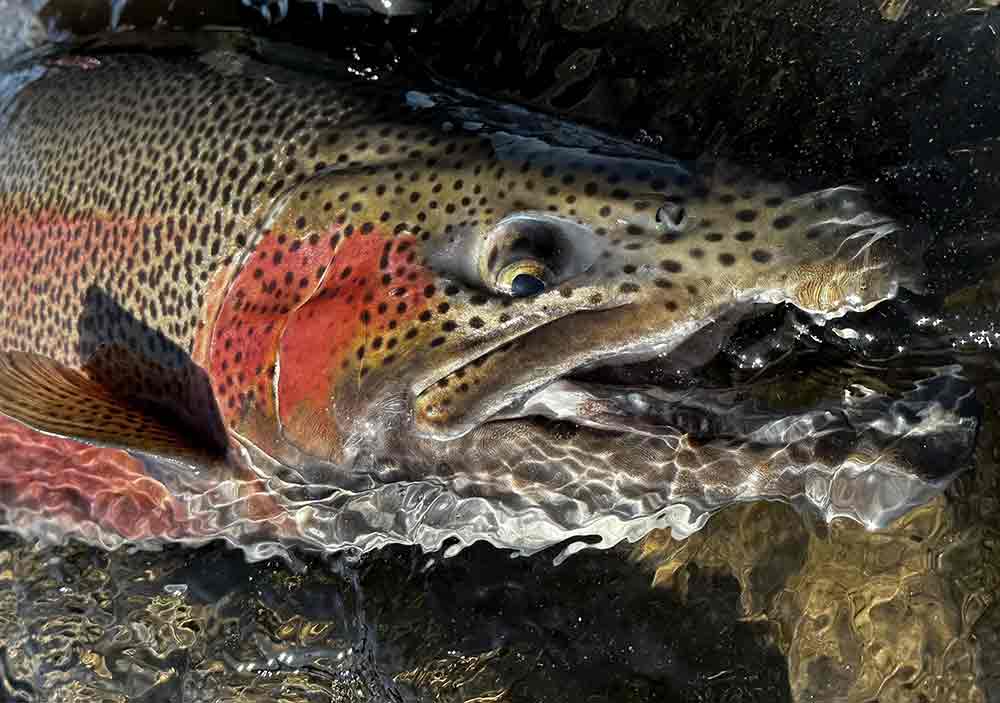
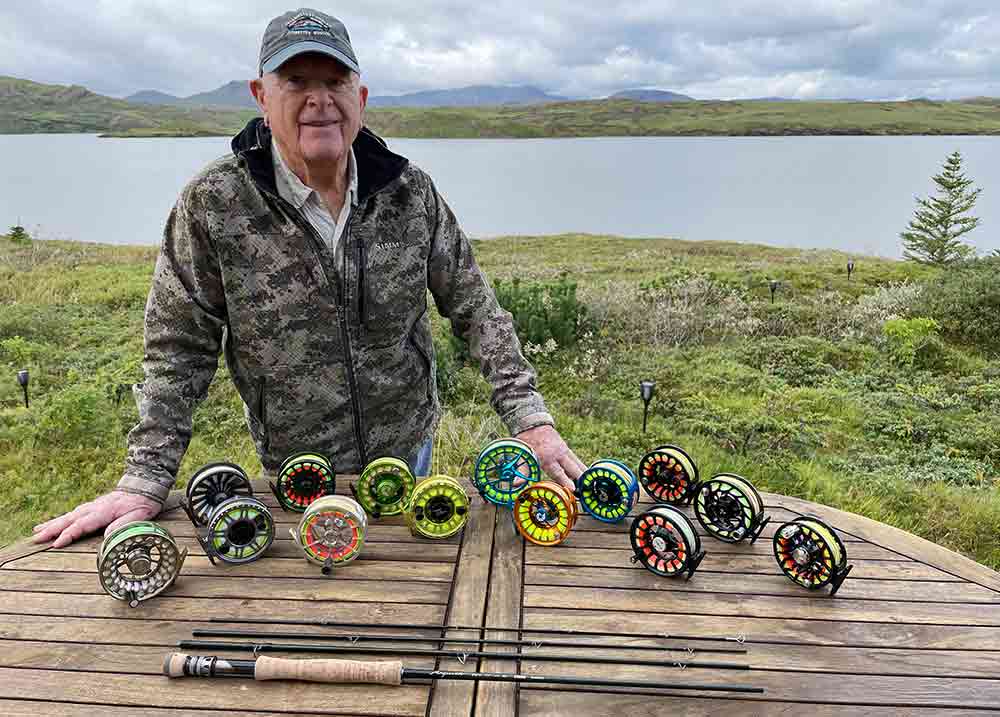
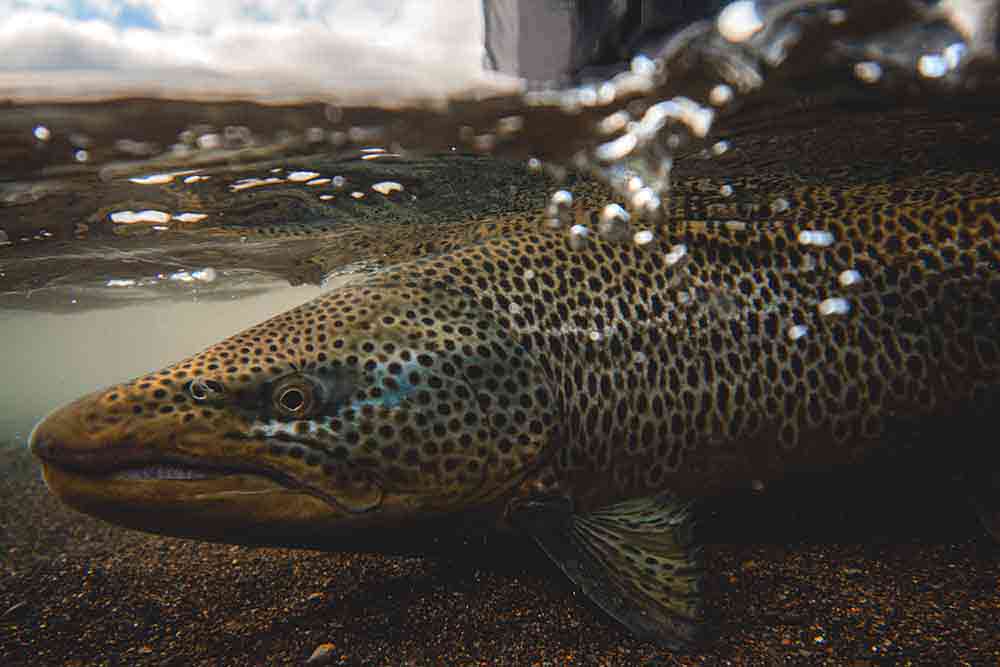

In our previous Shootout charts, we have always highlighted the “best” in test for each category in red. Determining what is “best” for many of our Objective Observation categories has actually become very subjective, since different anglers look for different types of performance from their reels. Most anglers would agree a lower price is better, but some might prefer the most expensive reel, assuming it is better quality or because it makes a fashion statement. One angler might want the lightest reel available while another might prefer the bulletproof quality of a heavier reel. One angler might prefer a wider range of drag to perfectly dial in their tippet protection while another might appreciate less range for quicker adjustment from max drag to very little drag as a tarpon swims around the trolling motor. One angler might value the largest arbor possible for reeling in line as fast as possible, while another might find it strange looking and ergonomically awkward.
For all these reasons, we highlighted the extremes in each category in red – both the highest and lowest. We will leave it up to the reader to decide what is “best” for them. We also calculated the mean value for each category and highlighted these figures in blue.
Here you’ll find the Manufacturer’s Suggested Retail Price (MSRP) for each reel. Nearly every manufacturer has a contractual obligation with their retailers that this price cannot be undercut until the reel has been discontinued. This insures that all retailers are on equal footing.
Keep in mind that currently reels purchased from fly shops located in the following states will not charge you sales tax: Alaska, Delaware, Montana, New Hampshire, and Oregon.
Here you will find the MSRP for extra spools. As consequence of the Covid-19 supply chain disruption, many reel manufacturers are just now catching up on production, meaning they are just now offering extra spools again. If a reel company happens to be out of extra spools, you have two options. The first is to be patient and wait until that company has them back in stock. The second option is to buy different reel.
We gathered these figures by weighing each reel on our Brecknell postage scale at the shop. We never trust the published manufacturer’s weight as these figures have been fudged in the past in order to appear more competitive. It is possible for a reel to weigh differently depending on where it was weighed – a reel weighed at sea level should be slightly heavier than the same reel weighed at higher altitude.
Here you will find each manufacturer’s published weight in ounces. In some cases, we could not find these figures on the manufacturer’s website so we asked our reps for the figure. We are happy to report that most manufacturer claimed weights were exactly the same as our tested weight, and in some cases even were listed as heavier than our actual tested weight. Perhaps this is a category we can now leave out in the future.
These figures were derived by weighing each reel on our Brecknell postage scale with the optimal amount of backing and a Scientific Anglers Amplitude MPX, WF-8-F line loaded onto each reel. There is a wide range of backing capacity from reel to reel. Reels with little backing capacity add less weight whereas reels with a lot of backing capacity add a significant amount of weight. Since you will be fishing with backing and line on your reel, we feel this figure is more important than the weight of an empty reel, especially for those trying to perfectly balance their fly rod and reel.
One interesting thing we found in the process of weighing reels with backing, is that reels weighed less when filled to the maximum capacity with Hatch backing than they did with 20- pound micron or 30-pound dacron. It wasn’t much – around .2 ounces and nearly impossible to feel the difference by hand. But for anglers looking to make their reel as light as possible, it might be worth spending the extra money for Hatch 68 pound backing.
As soon as we noticed this slight weight discrepancy we started weighing each reel with Hatch backing, although we admit some of the early reels were weighed with 20 or 30 pound and we didn’t have time to go back to double check.
These figures were derived by measuring the width of the reel from one edge of the frame to the opposite edge of the frame with our Husky digital caliper. With all reels we never included the reel foot, which would add a little more.
Here you’ll find the figures we derived by measuring each reel’s arbor, (the part of the reel where the backing touches). Larger arbors bring in line more quickly than smaller arbors, however they also have less backing capacity, (unless the spool is exceptionally wide). If we run into an issue with backing capacity, we always recommend Hatch 68 pound backing as it is thinner than 20 pound micron backing and very strong. If someone is adamant that they absolutely need gelspun backing we will order it, but in general we do not use traditional gelspun due to its tendency to cut people’s fingers. A slice in the wrong spot, whether on your fingers or calf could easily ruin your trip.
This column shows the figures we got from measuring the width of the spool. In some cases, the manufacturer utilizes a “U” or “V” shaped spool where the backing and line sit. In those instances, we tried our best to visually average the width of the spool and measure it there. Reels with U or V shaped spools include the Bauer RVR, Redington Behemoth, Redington Grande, and the Ross spools.
Manufacturers often fudge their backing capacities in order to look more competitive, so we felt it was worthwhile to determine our own backing capacity figures. In this column you will find our suggested amount of backing for each reel, using Cortland 20 pound white micron backing.
To derive these figures, we taped the front of each SA Amplitude MPX line, (the buckskin color end) to the arbor and spun the entire line onto the spool first. Then we connected white 20 pound Cortland backing to the MPX’s green running line, filling the rest of the spool’s available space with backing. We want a full spool of backing with maximum capacity, but we don’t like over-crowded spools with excessive backing that will cause your line to jam up in the frame when reeling up. Our Yellowstone Angler preferred backing capacities give the angler the most amount of backing capacity for each reel, while still being able to reel up the line (under your pinky for consistent pressure) without your line bumping the frame at the leader end.
Keep in mind lines stretch over time, especially stiff saltwater lines that you’ll want to stretch each day before use. If you are rigging saltwater lines (or you simply prefer less backing to avoid any chance of jamming), you might decrease these figures by 25-40 yards.
Here you will find our suggested amount of backing in yards when Scientific Angler’s 30 pound blue dacron backing is used. (See above in our YA preferred backing capacity for our process in deriving these figures).
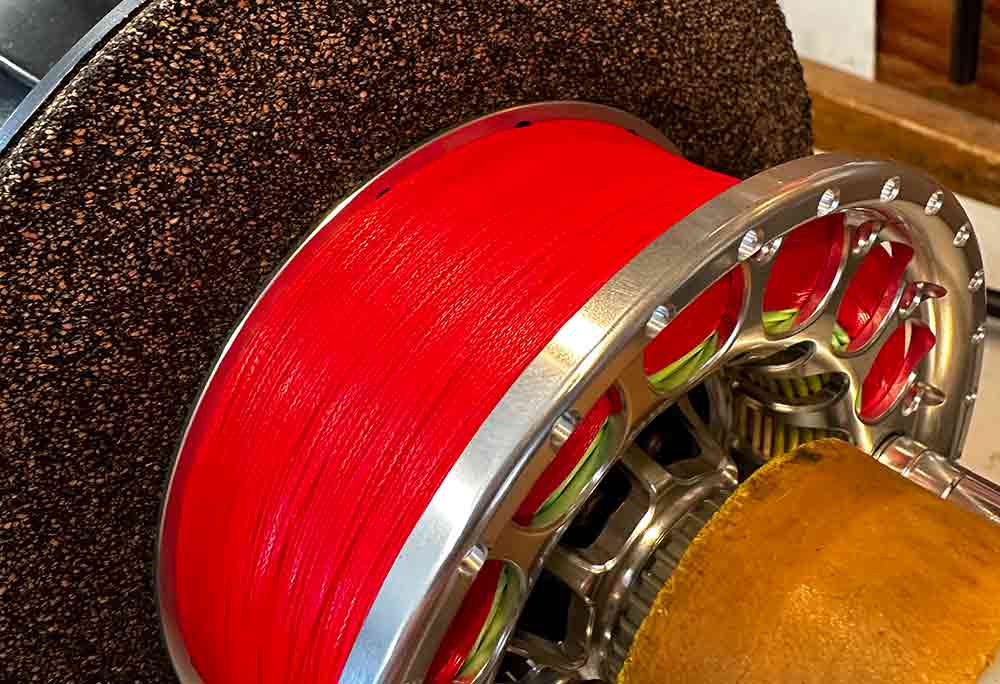
Here you will find our suggested amount of backing for each reel using Hatch 68 pound braided polyethylene backing.
We recommend Hatch backing whenever more backing capacity is desired. Although Hatch backing is made out of polyethylene, it is not gel spun backing. This checks out, as we’ve found it won’t cut your skin like traditional gel spun backing. Hatch wouldn’t give too much of their proprietary information, but they did confirm that Hatch backing is a coated braid of 8 strands of polyethylene microfibers.
Hatch backing is thinner than 20 pound backing but obviously much stronger. It also lays “flatter,” which not only gives you more capacity, but it also helps prevent the backing from “cutting” into itself. If backing is not reeled on tight enough, (perhaps someone hand reeled their own backing on, or a big fish breaks off over 100 yards away and the angler is forced to reel the backing up without the pressure of a fish) it can sink into itself the next time a big fish takes off. Since Hatch lays flatter, it tends to compress better.
Lastly, we’ve found that Hatch backing is more durable over the years than 20 or 30 pound micron or dacron. Really the only down side is the price as it is $30 per 100 yards instead of $10 per 100 yards like 20 pound micron or 30 pound dacron.
In this column you’ll find the published backing capacity figures from each manufacturer. Most manufacturers listed their capacity using 20 pound backing, although some manufacturers chose to use 30 pound, 50 pound, or 68 pound backing. We found these figures to be quite off the mark from our preferred backing figures, usually the manufacturer listed more capacity than we found to be possible, but some actually listed less.
Here are the figures for each reel’s maximum drag strength. To measure this we used two scales, allowing us to double check our findings; a 25 pound Rapala Mechanical Tube Scale and a 50 pound Rapala Digital Scale. In some cases, the maximum drag exceeded our mechanical tube scale, so we were forced to use only our digital scale. For all figures over 25 pounds, only the digital scale was used. Our Rapala digital scale maxed out at 50 pounds, so we are not sure how much drag the Ross Evolutions R Salt actually has, so we marked it at 50+. Strangely, Ross only reports the max drag as producing “nearly 30 pounds” of drag pressure.
Our process in finding each reel’s maximum drag started by putting 25 feet of Cortland 80 pound backing on each reel’s arbor, using a Duncan loop and reeling the rest onto the spool. We tied a perfection loop at the other end of the backing and slid that loop over the hook of the scale. We then turned the drag as far as it would go, within reason. This means we twisted the drag adjustment knob as far as it could go “hand tight” but not as hard as humanly possible or with using a tool. In this respect, some of the drags could actually be slightly stronger than we tested, but we felt turning them any further would be difficult, especially for anglers who may have developed arthritis or carpal tunnel. Some reels utilized a drag adjustment knob that limited max drag physically. For these reels it was easy to find the max drag by twisting the drag dial as far as it would go.
We then hooked the handle of our scale over a stationary screw that was drilled into our desk counter. Once the drag was set to the maximum setting and the backing loop was over the scale’s hook, we then pulled the reel away from the scale, being sure not to put any extra pressure or resistance on the spool with our fingers.
It was interesting to see that many reels had a little start-up inertia, meaning it took more drag pressure to get the spool to spin initially than after a second or two of steady spinning. On lower drag settings this was negligible, but on the max drag settings it could be as much as 2-3 pounds more. We didn’t include any extra start up pounds, recording the number after a second or two of steady pull.
Note – so few manufacturers published their own maximum drag strengths that we decided to exclude a manufacturer claimed maximum drag column.
Here you will see how many rotations the drag adjustment knob takes to turn each reel from half a pound of drag resistance to 3 pounds of drag resistance. We feel most anglers will be using an 8-weight reel’s drag within this range.
To get these figures, we first set each reel’s drag at half a pound. To do this we placed the perfection loop over the hook of a scale and pulled the reel backwards until the spool moved at .5 pounds. Next, we cut a thin piece of sticky note paper in the shape of an arrow and stuck it on the drag dial, “straight up” as if it was signifying 12:00 o’clock, with the reel foot facing the ceiling. We then turned the drag adjustment knob up until the spool spun at 3 pounds of drag pressure. We recorded how many rotations this took, sometimes this was more than full rotation, sometimes it only took half a rotation or less.
For the large browns in Iceland, a wider range of drag was preferred, especially when trying to land powerful surging fish on 4X-5X tippet. Had we been fishing these reels in Florida with 20- pound fluorocarbon tippet, our field notes would likely have been different.
Here are the number of rotations the drag adjustment knob turns to go from zero drag pressure, to maximum drag pressure. We derived these figures the same way we did to find the range of drag from half a pound to 3 pounds of drag, however the bottom end was found by turning the drag adjustment knob down as far as possible and the high end was found by turning the drag knob up to the maximum setting.
Again, for species requiring light tippet, we favor reels with wider ranges of drag. More options relate to more control and hopefully more fish landed. If your quarry is larger game fish such as pike, muskie, double-digit bonefish, snook, redfish, permit, or baby tarpon, then having less drag adjustment allows you quicker control of the drag. For instance, once you finally have the fish near the boat you can keep a significant amount of drag on the fish so your guide or fishing buddy can grab the leader, or the mouth or tail of the fish. But if the fish takes a big tail kick, you might want to lessen the drag pressure quickly, especially if it starts swimming towards the trolling motor. With this in mind, having less drag adjustment can get you out of trouble faster.
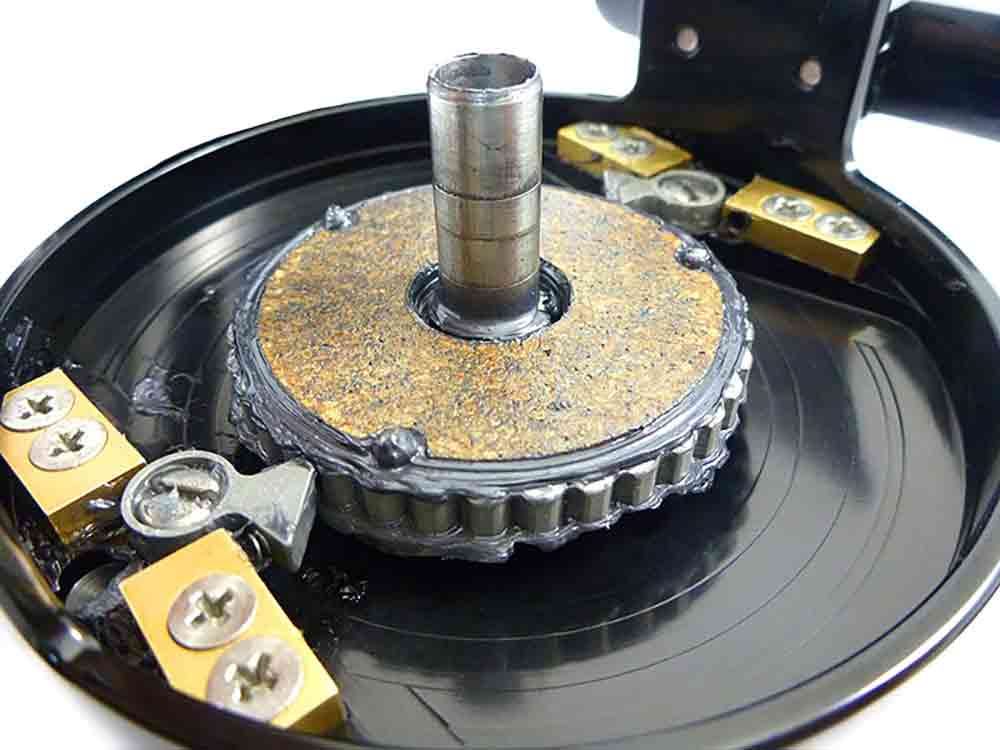
Here we list the type of drag each reel utilizes. We tried to break these down into general categories which are explained below:
The drag mechanism on a cork disc drag works by pressing a cork ring into the aluminum spool. The cork creates more friction as it is pressured into the aluminum spool by a draw-bar, which essentially pulls the spool down into the cork ring, which is usually located on the frame side. As you turn up the drag adjustment knob, more and more pressure is applied to the cork giving you more drag resistance.
One of the main advantages of cork is its innate heat resistance. It is also very smooth and we have found it to be very durable over time, especially when you back your drag off to store your reel. Another advantage of a cork disc drag is the reliability factor. If you have an issue with a sealed-drum disc drag reel, (perhaps moisture does get in it after all) it is very difficult to take a reel apart, dry it, put it back together, and keep fishing. Cork drags can get wet without a problem, so if some sand or grit is causing you trouble you can easily wash it out and go back to fishing. If you are going to bring a backup reel, it is a good idea to have a draw-bar cork disc drag reel that is simply not going to fail on you when fishing a remote corner of the world.
It is not uncommon to hear of cork disc drag reels that are 40-50 years old, and some even 90 years old; they can hold their value quite well as they are reliable and collectable. Some of the first reels to use cork drag systems are Seamaster, Fin-Nor, Tibor, Abel, and Islander. At one time Seamaster reels were responsible for 90% of saltwater fly-fishing records. We’re not sure how many records Abel and Tibor have together, but at one point Tibor alone had over 800. Granted, the newer sealed disc drag reels have not had enough time to catch up, but all these records do show how effective a cork drag can be. Plus, tippet has only gotten thinner and stronger.
Some say the main disadvantages of owning a cork disc drag reel is maintenance and a higher start up inertia, neither of which is to us, a deterrent to buying a reel. Ted Juracsik (owner and inventor of the Tibor reels) has been quoted many times saying you don’t have to worry about maintaining your Big Game or Signature reels for 5-6 years, (other than spaying them down after use). When you do take it apart to clean it, never use solvents which can dissolve the adhesive holding the cork together. Just use water followed by adding grease to the cork. Maintenance with Abel is virtually the same, however they recommend adding neatsfoot oil to the cork after cleaning.
A typical disc drag is based on stacked flat counter-rotating discs. It occurred to Lamson’s engineers that the same surface area of the discs could be configured into a pair of matched cones, resulting in a “conical” drag that could fit inside Lamson’s smaller diameter, sealed hub. Lamson’s hub is fully sealed from moisture and debris. The construction also cuts down on weight, which is one reason Lamson reels are so light. They are also very easy to change the drag direction, by simply flipping the clutch over.
The Tibor Signature series is unusual in the fact that it uses a cork disc drag that is pressed against a fully waterproof aluminum hub. The hub is sealed by a large flat o-ring, which fully waterproofs the drag and bearings, even if the reel is submerged. As the drag adjustment knob is turned clockwise to higher settings, the aluminum hub is pulled into the cork disc by a draw-bar, thus increasing friction and drag pressure. One thing we really like about this design is that it enables the angler to use a quick release spool, rather than having to use a coin or large flathead screw driver like the Everglades in order to remove the spool.
Additionally, Nautilus uses a cork ring pressed against carbon fiber discs in a sealed hub to achieve their smooth action and stopping power.
To make room in our Objective Observations chart, we abbreviated sealed disc drag to “sealed discs.” A sealed disc drag utilizes a series of stacked discs that are enclosed in a waterproof housing. The stacked discs compress together to create the drag pressure. Different manufacturers use different material discs in different combinations. Alternating stacks of stainless steel, carbon fiber, Rulon (plastic), and Delrin (plastic) discs are all common. The waterproof housing encloses the stacked discs, preventing any water, debris, sand, dirt, salt and grime from entering, potentially causing the discs to malfunction.
More and more we are seeing sealed disc drags become the industry standard, especially for saltwater use. As you will see, the majority of the reels in our comparison are categorized as sealed disc drags, (39 out of 49). We have found however, that some manufacturers claim to have a fully sealed drag when really the term “sealed from debris” is more accurate than “fully sealed,” which implies moisture can never get in. The best sealed disc drags use o-rings or flat rings that keep moisture out of the drag mechanism. Even if water is able to sneak in, the o-ring won’t allow it to pass deeper into the stacked disc area of the drag.
The main disadvantage of having a completely sealed disc drag is that if something does malfunction, either due to a manufacturer or field defect, (water somehow does get in) you are essentially done for the day and cannot repair it on the fly. Mechanically inclined anglers may be able to fix it “back at the lodge” but even that could be considered hopeful thinking. When in doubt, it’s a good idea to bring a backup reel.
Likewise, we abbreviated stacked disc drag to “stacked discs” to make room in our chart. A stacked disc drag system utilizes several discs laying one on top of the other, minus a waterproof housing. When the drag dial is cranked up the discs are compressed more tightly together, giving the reel more drag pressure due to more friction resistance created between the discs.
A non-sealed drag sounds like a bad thing but we don’t feel that way. While water, debris, sand, dirt, salt and grime may be able to enter the stacked discs, spraying down your reel thoroughly after use will eliminate most issues caused by such contaminants. Not having a fully sealed drag also means if water does get in, perhaps it can air dry easier. If you have ever put a wet fly back into a waterproof fly box, you know how the moisture can spread to other flies – in the same way moisture can spread to other discs without a chance to air dry in a failed fully sealed drag.
In this column you’ll see how many color options each manufacturer offers. This is constantly in flux as manufacturers offer new limited-edition colors, (or drop less popular colors). Most manufacturers offer one or two “standard” color finishes (usually black or silver), which cost less money than “additional” or “custom” colors. Aside from Galvan, who does not charge extra for their custom blue, orange, or gun metal gray, expect to pay an additional $100 for a solid custom frame/spool color to $1200 for a hand painted graphic anodized finish.
Abel, Galvan, Hatch, Nautilus, Taylor, and Tibor offer some of the best custom colors available on the market today, with Abel taking the top spot (by a long shot). Abel offers an uncountable amount of color combinations as well as engravings to fully customize the look of your reel.
Here you will find in which country each reel is manufactured. In many cases, the frames and spools are machined overseas and assembled here in the USA. In these cases, we listed the reel as manufactured in the original overseas country. Reels listed as made in the USA are manufactured in the USA and assembled in the USA. We are guessing that some small reel parts, like the screws, discs, or washers may be made overseas.
In a world where global economy has made the cost of goods cheaper, it is hard to say what is “best” in the category. Some will argue that cheaper is better, as long as the quality is equal or better. Some will argue it is better to have American manufacturing since it boosts the local economy, as well as GDP, since it reduces net imports. We are staying out of that debate, but one thing that we do feel is “best” about USA made reels has to do with the Dingle-Johnson Conservation and Recreation Act.
Under the Dingle-Johnson Act of 1950, when you purchase American-made fishing products, 10% of the wholesale price goes into a trust fund to support fish and wildlife management. For example if a reel retails for $495, there is a good chance it was sold to a dealer for $247.50. That means the US reel manufacturer pays $24.75 towards the conservation fund. If a distributor sells a similar reel made abroad to a shop that retails for $495, the distributor only pays 10% on the price they bought the reel for, which is likely $120 or quite possibly less depending on volume. This means the distributor would only be paying $10-12 towards the fund.
The general idea behind this, is that by creating a better-quality hunting or fishing experience, more hunters and anglers will want to hunt and fish, and thus spend more money doing it. In short, if you buy a USA made reel, more money goes towards the conservation of fish and wildlife than if you purchase a reel manufactured in another country.
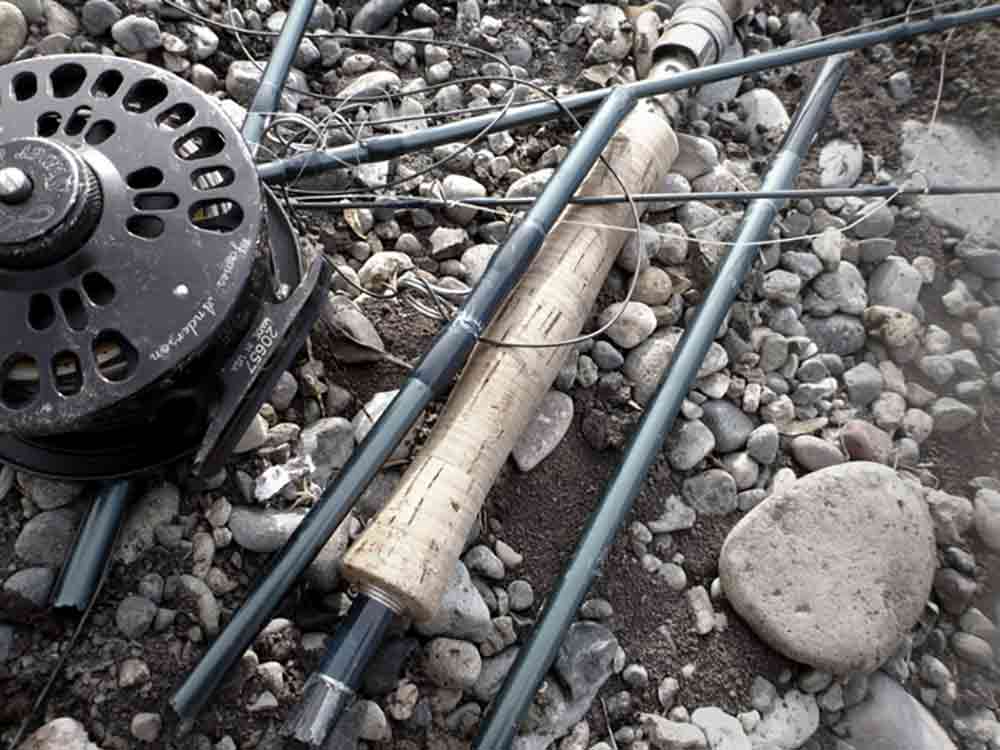
When purchasing an expensive reel, it is nice to know that you are fully covered should you encounter a defect in the materials or workmanship of the reel. We are happy to report that all the reels in our Roundup offer some form of a limited lifetime warranty. Below we have summarized each manufacturer’s warranty policy. As you will see most are pretty similar:
Abel – A Lifetime warranty for original owner, covers the repair or replacement of parts due to defects. Repairs not covered by warranty are quoted on a case-by-case basis. Turnaround time is usually 4-6 weeks from receipt.
Bauer – Warrants against any defects in material or workmanship for the lifetime of the original purchaser when the reel is purchased from an authorized Bauer dealer. This warranty is limited to repair or replacement of the reel at Bauer’s option and does not cover consequential or incidental damages. Repairs not covered by warranty are quoted on a case-by-case basis, generally $30 including shipping. On older models there is a service rebuild, ($50 plus $18 shipping). Turnaround time for current models is typically 10-15 days including shipping.
Cheeky – All Cheeky reels (except PreLoad reels) carry a limited lifetime warranty to the original owner covering defects in materials or workmanship. Cheeky will repair or replace any Cheeky fly reel under this warranty at no cost for parts or labor. Cheeky has sole discretion as to whether a reel is covered under warranty. If your reel is not covered under warranty, Cheeky will repair or replace it for a fee. Cheeky will provide you with a cost-estimate so that you can make an informed decision about repairing your fly reel. Failure to register within 90 days of purchase will relieve Cheeky Fishing of any obligations under this warranty. Turnaround time usually takes 2-3 weeks from receipt.
Einarsson – Lifetime warranty for the original owner covers the cost of parts and labor due to defects. For issues not covered under warranty, a sliding scale is used on repair costs, depending on which parts need repair or replacement. Turnaround time is typically 4-6 weeks.
Galvan – All Galvan fly reels carry a lifetime warranty covering all parts and workmanship under normal use and conditions. This warranty provides that your Galvan reels will be repaired or replaced at no charge to the original owner. The warranty is effective only if purchased by you or for you from an authorized Galvan dealer, with either registration of warranty card or proof of purchase. Non-warranty, repairs start at $50.00 plus the cost of shipping. Galvan reserves the right to determine whether to repair or replace any Galvan reel or spool covered by this warranty. Galvan also reserves the right to replace any discontinued models or parts with current models or parts when necessary. Colors may vary between original and replacement parts. Turnaround time usually takes 2-3 weeks.
Hardy – Hardy warrants that their reels will be free from material defects in design, material and workmanship for a period of 5 years (or the period stated in the leaflet provided with your reel), from the date on which it was originally purchased. This warranty only applies to the original owner. This warranty does not cover damage caused by misuse, lack of maintenance, negligence or normal wear and tear. All Hardy reel warranty claims determined to be caused by non-manufacturing related failures will be subject to a service fee. The service fee for all Hardy reels is $35 per claim plus replacement parts. This fee covers the cost of labor, processing, and shipping & handling. The cost of replacement parts will be quoted by claim. Hardy reserves the right to determine whether a reel can be repaired or replaced. In the event the reel cannot be repaired or replaced a current Hardy reel may be offered as a replacement. It is important that you register your reel within 60 days of purchase. Turnaround time usually takes 2-3 weeks.
Hatch – All Hatch reels are carefully inspected to assure product consistency and quality, and are guaranteed against manufacturer’s defects in materials and craftsmanship for the life of the product while it is available on the market. The limited lifetime warranty only applies to the original owner and is non-transferable. Any defective Hatch product will be repaired or replaced (at Hatch’s option) at no charge for parts and labor. Their warranty does not cover damage caused by accident or misuse – including the use of non-Hatch tools on reels, modification or anodize color variance. All backing and line must be removed before sending in your reel. Turnaround time may take up to 6-8 weeks once received.
Lamson – Lifetime warranty is valid for any defect in material or workmanship for the original owner. Warranty does not cover damage from misuse, improper maintenance, or modification. Repair or replacement is at Lamson’s discretion. Typically takes 2 weeks after arriving at Lamson’s warehouse.
Nautilus – All reels carry a limited warranty for the original owner covering any defect in materials or workmanship. Defective reels will be repaired or replaced at Nautilus’ option at no charge for parts or labor. The Warranty does not cover damage due to accidents, misuse, improper maintenance or modification. For non-warranty repairs, Nautilus will contact the angler with a quote prior to starting repairs. If your reel was purchased and registered within 12 months prior to mailing it in for repair, shipping and handling will be free of charge for Canada or the USA. Fly line and backing should be removed before sending your reel in. Turnaround time is usually around 3-4 weeks.
Orvis – Orvis reels are guaranteed for life against defects in materials and workmanship. Reel repairs are completed on an individual basis for a $30.00 handling fee plus the cost of any parts required, not to exceed $50.00 without prior approval. Any breakage or malfunction deemed by our repair specialists to have been as a result of defect will be fixed free of charge. Turnaround time is usually 4-6 weeks depending on the season.
Redington – Redington reels purchased through an authorized retailer are covered by an original owner warranty. This warranty does not cover misuse, neglect, normal wear, fine, theft, loss, or intentional damage. Redington reserves the right to replace discontinued models with newer ones when necessary. Colors may vary between original and replacement parts. Turnaround time can take up to 6-8 weeks or longer depending on the season.
Ross Reels – Ross Reels purchased through an authorized dealer are covered by a limited lifetime warranty for as long as the product is on the market. This warranty applies only to the original owner only. This warranty does not cover normal wear and tear, fire, theft, loss, intentional damage, or negligence that causes damage to the reel. Ross reserves the right to determine whether to repair or replace the reel / part. All shipments to Ross must be freight paid and include a completed product service form. Turnaround time can take up to 3-6 weeks.
Sage – Sage reels are covered by an original owner warranty against defects in materials or workmanship. The warranty is limited to repair or replacement and does not cover misuse, incidental damage, fire, theft, intentional breakage, modification or customization. Colors and components may vary between original and replacement parts. Turnaround time can take up to 6-8 weeks or longer depending on the season.
Shilton – Shilton fly reels carry a limited lifetime warranty that covers the repair or replacement of parts due to defects in materials or workmanship for the original owner only. Shilton will determine if the product is covered under warranty. For repairs not covered under warranty, a quote will be provided for approval before proceeding with any repairs. Turnaround time typically takes between 3-6 weeks.
Taylor – Taylor offers an unconditional one-year warranty from the original purchase date, in which they will repair or replace your reel for only the cost of shipping. After a year, a $65 processing fee is charged, plus shipping that is valid for the lifetime of the product. Unlike most manufacturer, Taylor’s warranty is transferable and valid for second-hand owners as well. Turnaround time is one of the fastest, typically less than a week from receipt.
Temple Fork Outfitters – TFO’s warranty covers breakage due to defects in materials and workmanship. During the life of the registered owner, TFO will repair or replace any reel that breaks due to defect at no charge. If you feel you have a defective reel TFO asks that you take a photo of the area you believe to be defective as well as a photo of the entire reel and the logo portion. E-mail this information to [email protected] and TFO will review your case promptly and contact you with the next steps. For repairs not covered under warranty, a $35 fee for parts and shipping is charged, if it’s determined a replacement is needed the fee is half of the retail price of the reel. Turnaround time is usually 3-5 weeks.
Tibor – All Tibor reels carry a limited lifetime warranty for the original owner when purchased through an authorized dealer. This warranty covers the repair or replacement of any part due to a defect in material or workmanship. Colors may vary between original and replacement parts. Parts for discontinued models may be replaced with current parts. Tibor reserves the right to determine whether the reel is covered under warranty, which does not cover damage caused by accident, misuse, neglect, improper maintenance or normal wear and tear. Non warranty repairs are quoted on a case-by-case basis and are very fair. Turnaround time usually takes 3-5 weeks.
Click here for more photos and videos of our real world testing
We hope you have enjoyed reading our 2023 Reel Roundup. These reviews take us a lot of time and effort. With your support we can continue to give you more reviews and head to head comparisons on tackle and equipment in the future. So if you like what we are doing, and found this review helpful, the best way to thank us is to buy a rod, reel, or outfit from the Yellowstone Angler.
You can shop for reels on line, call us at 406-222-7130, or e-mail us at [email protected] and we can discuss your needs and wants. We’re confident that we can get you set up with the perfect rod, reel, or outfit that best fits your needs.
If you are purchasing one of our ultimate outfits, we’ll throw in a free line of your choice ($79.95 value). If you would prefer a more expensive line, (normally $129.95), we’ll upgrade you for only an additional $50.00.
We’ll also ship it to you for free, and since we’re in Montana there is no sales tax.
Once you get your new rod or outfit, do some casting on the lawn, and if you feel it is not just what you wanted (and it has not been fished), we’ll allow you to return it for a full refund, less the shipping charges.
Use this link to go to Our Favorite Outfits. If you are looking for that perfect saltwater set up, then click on this link for Our Favorite Saltwater Outfits.
If you get to Montana, we invite you to stop at our shop and do your own rod and reel comparison right here. We have several reels rigged with the various line sizes and leaders all ready to go. We’ll come out with you and give you some help to fine tune your casting stroke, or just help you with the basics if you are new to the sport. And once you’ve picked out the perfect rod and reel, stay and enjoy a few days on the water with one of our top guides.
We value your comments about our reviews and invite any questions or ideas you might have. Please e-mail us anytime at [email protected].
– James Anderson, George Anderson, and the Yellowstone Angler crew